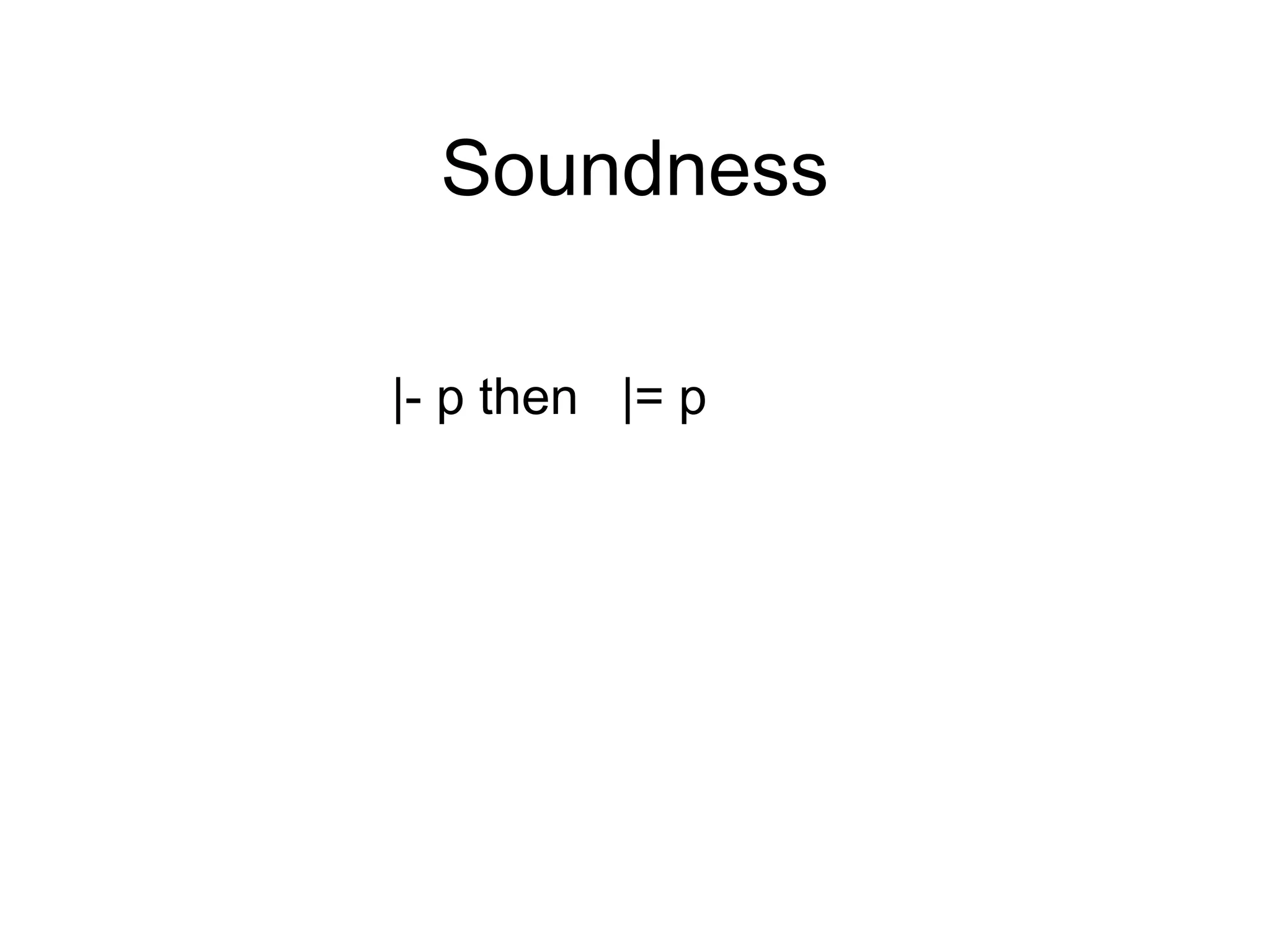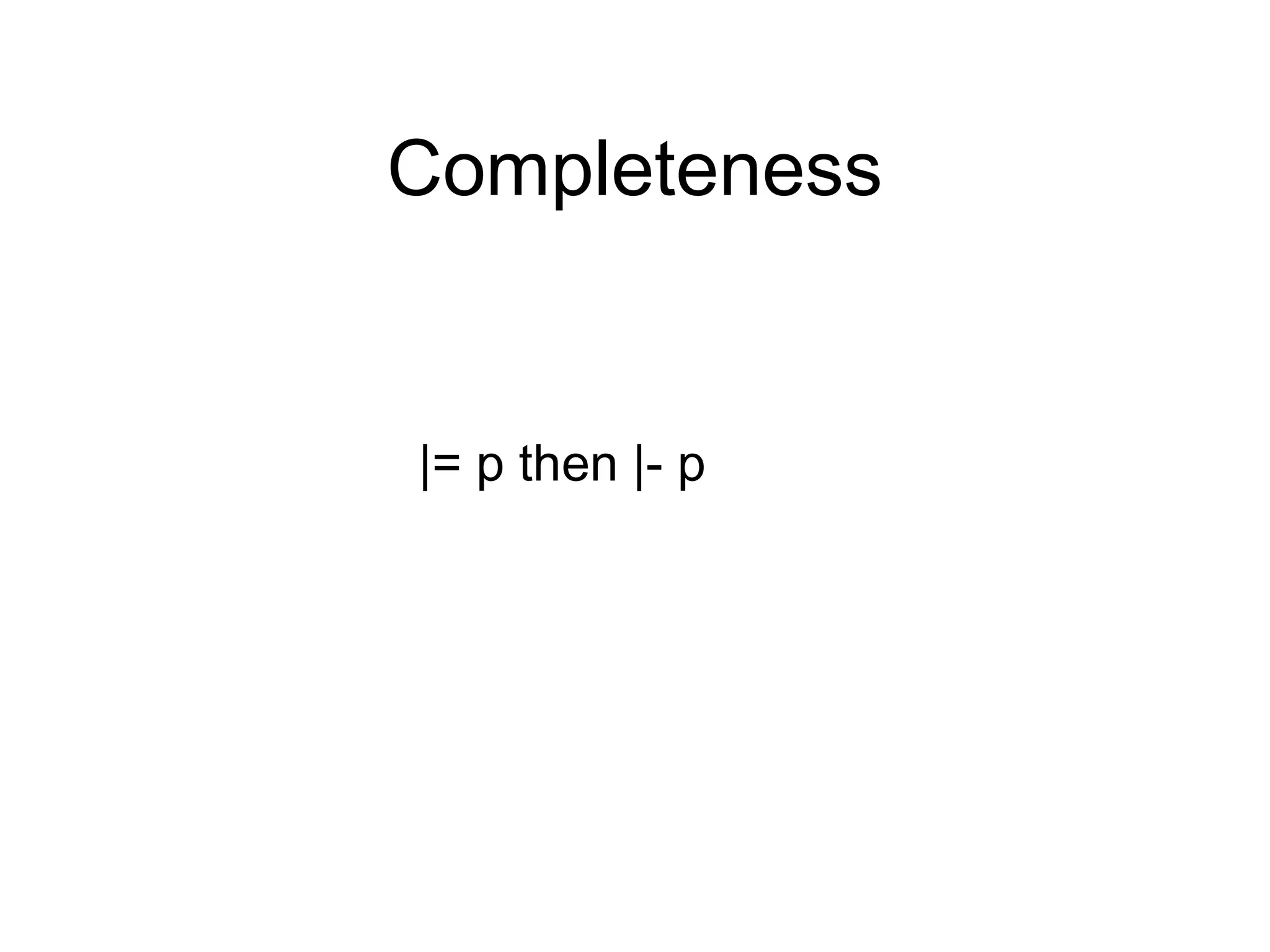This document provides a brief introduction to logic by outlining its historical development and key concepts in propositional logic. It discusses how logic evolved from philosophical logic using natural languages to symbolic and mathematical logic using formal languages. It then defines propositional logic syntax using formulas and semantics using truth assignments. It explains how to determine if a truth assignment satisfies a formula and different perspectives on semantics. Finally, it introduces proofs in propositional logic using natural deduction rules.
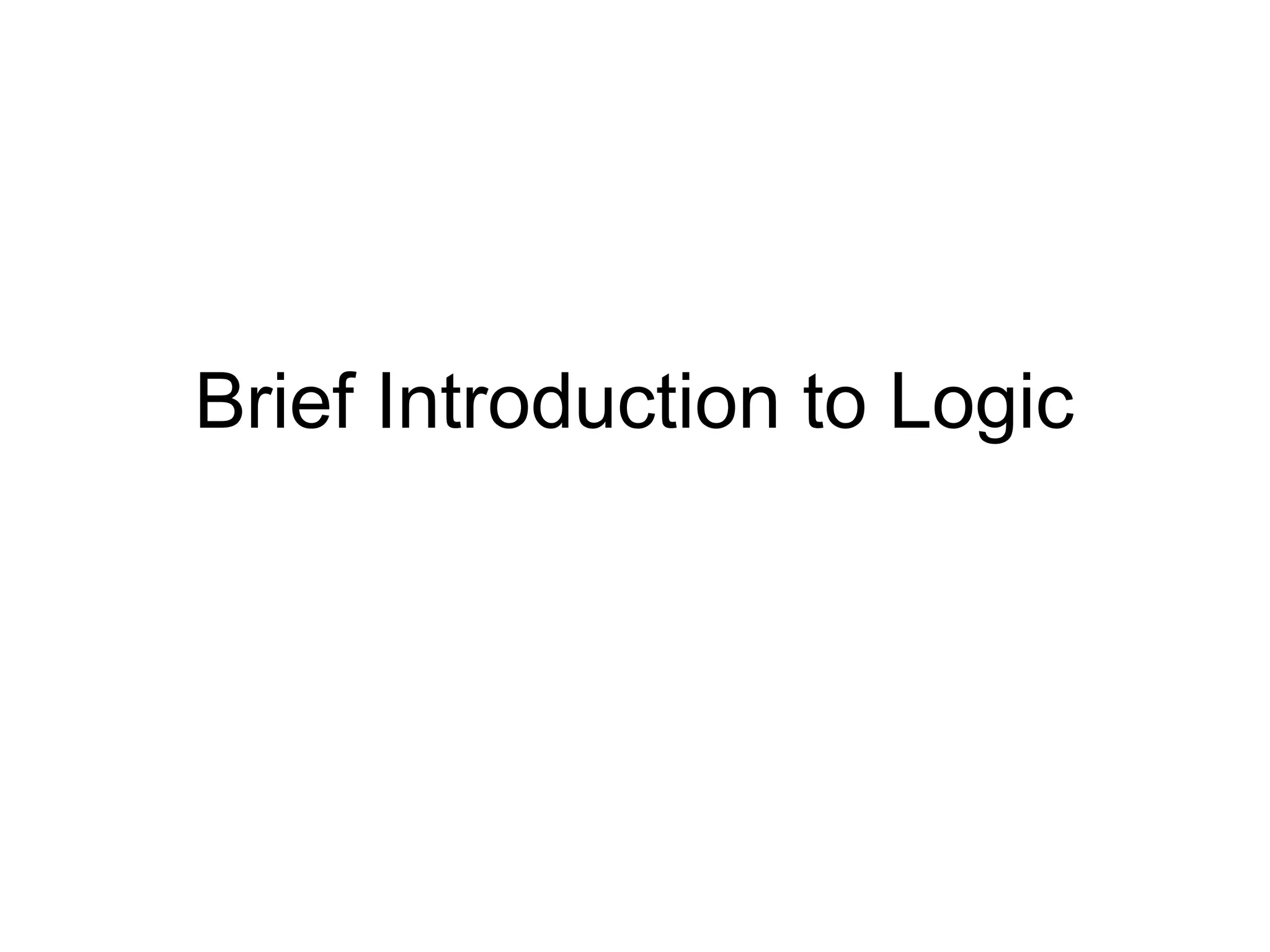
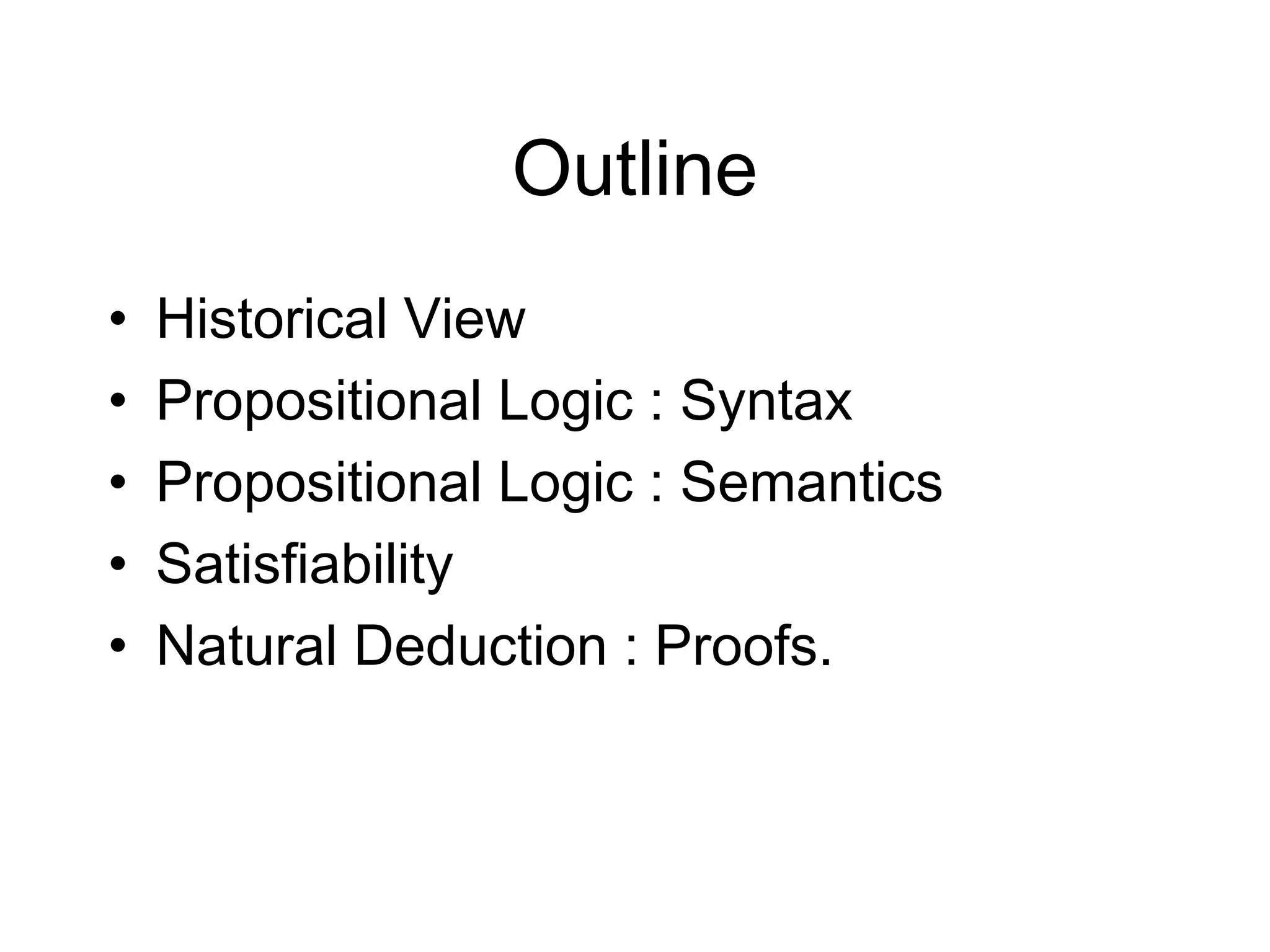
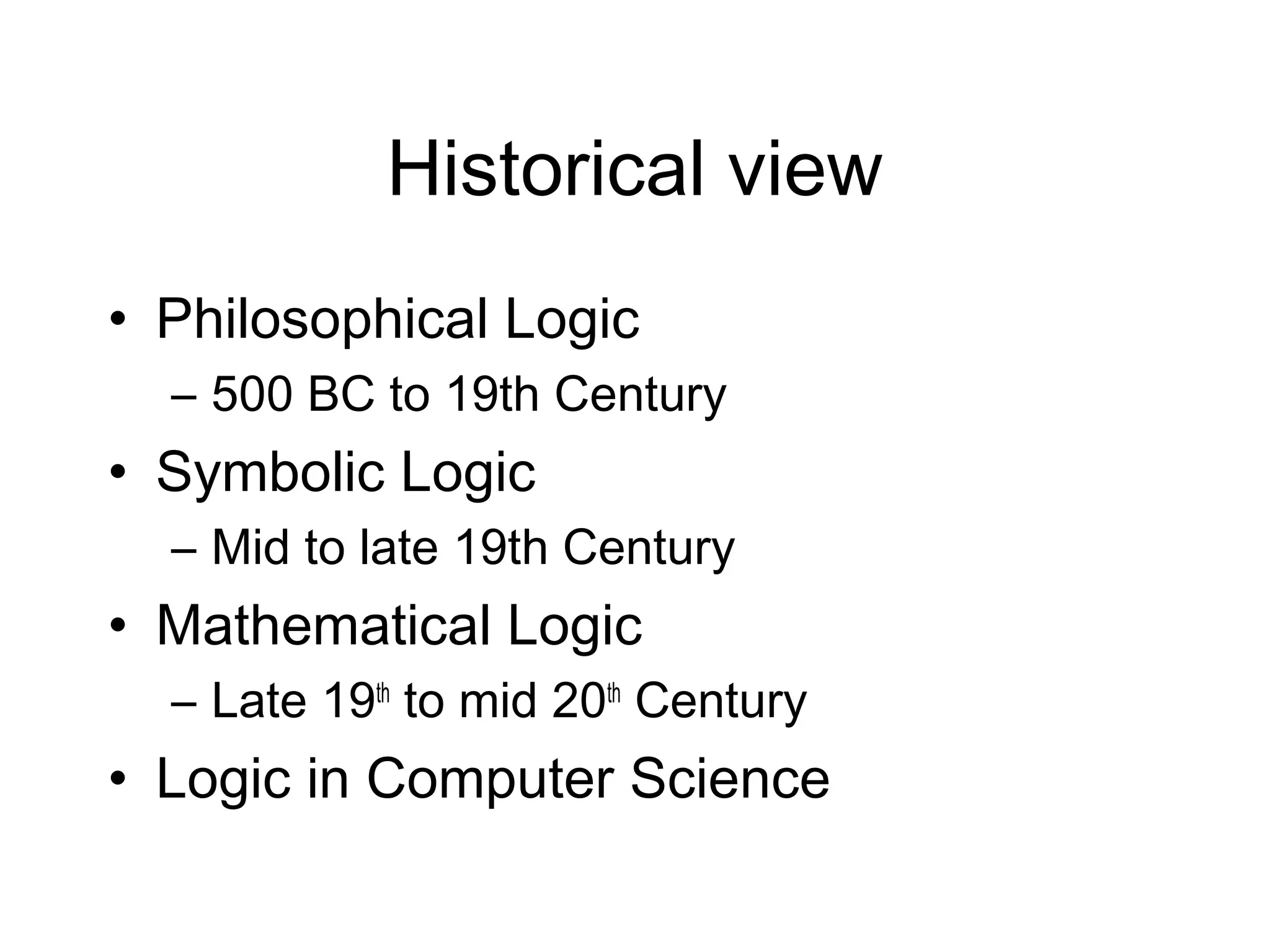
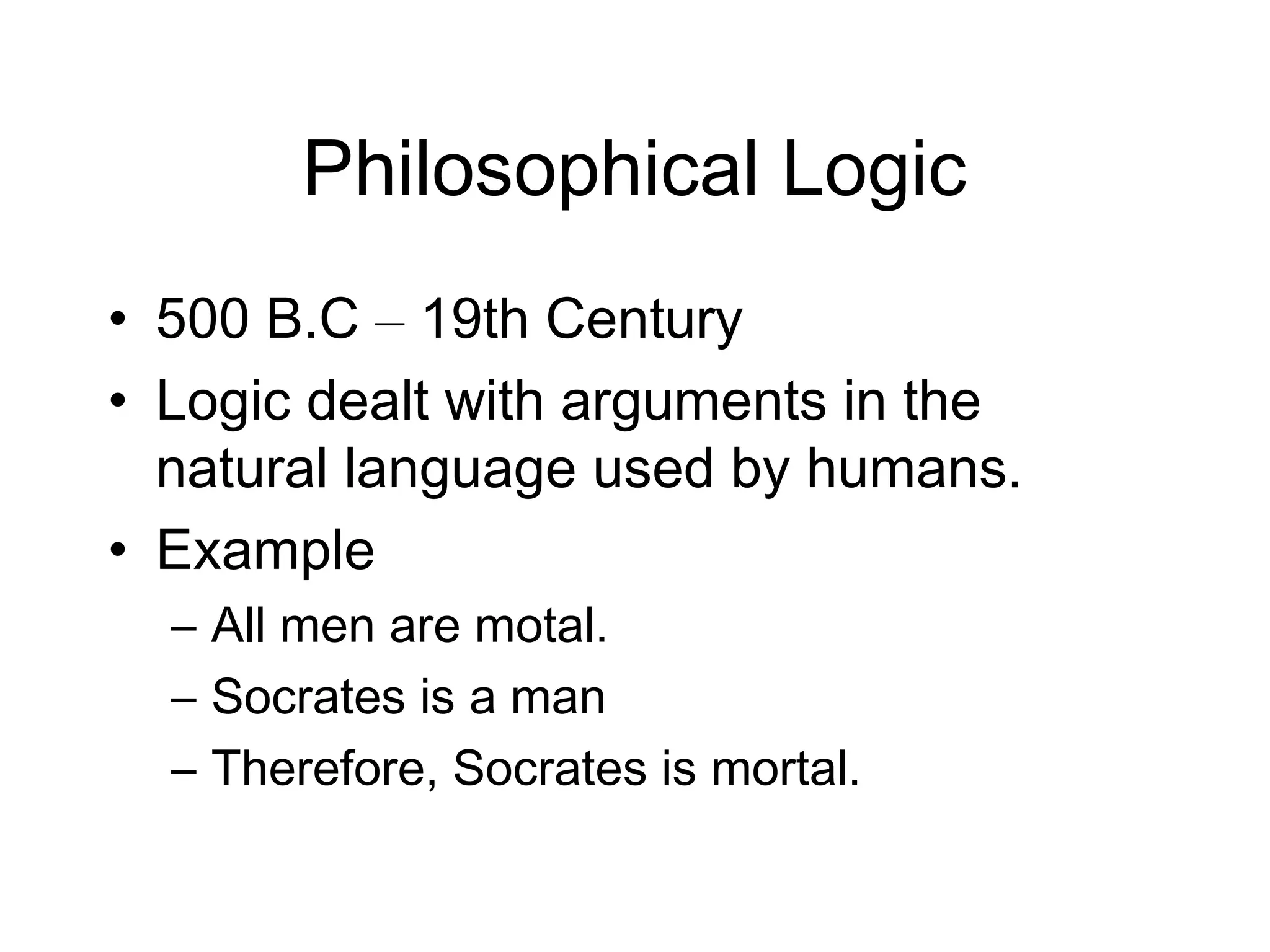

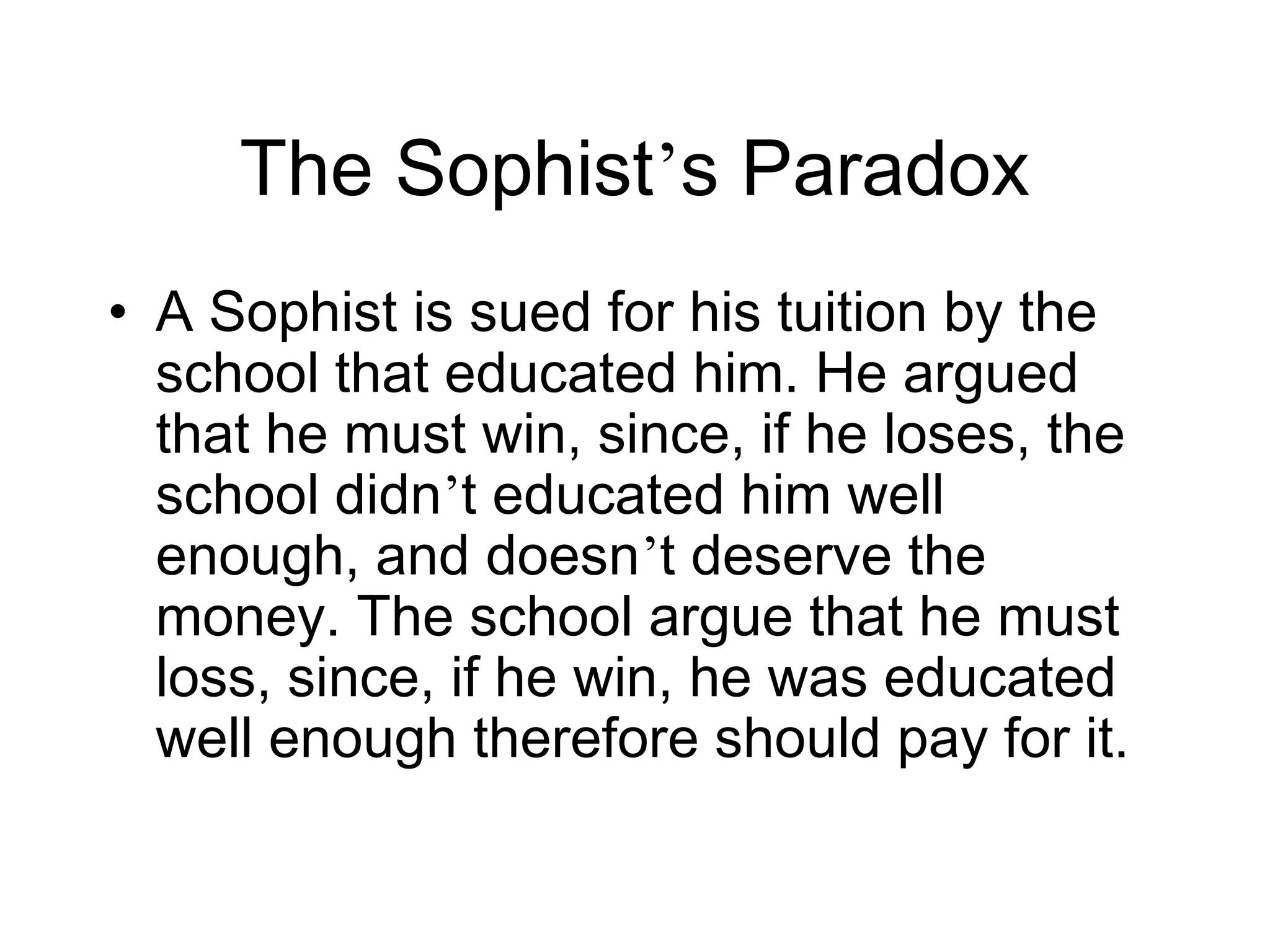
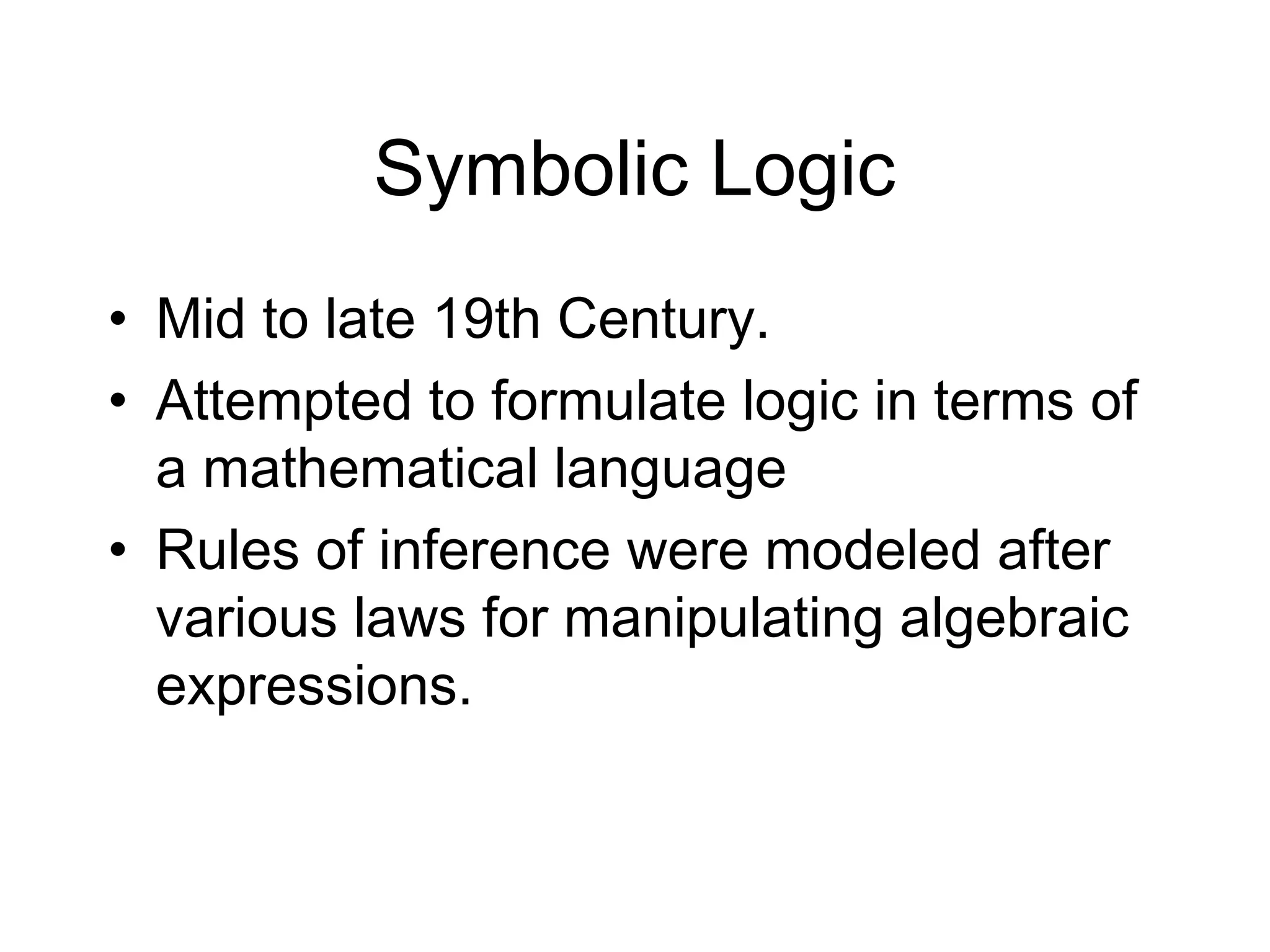
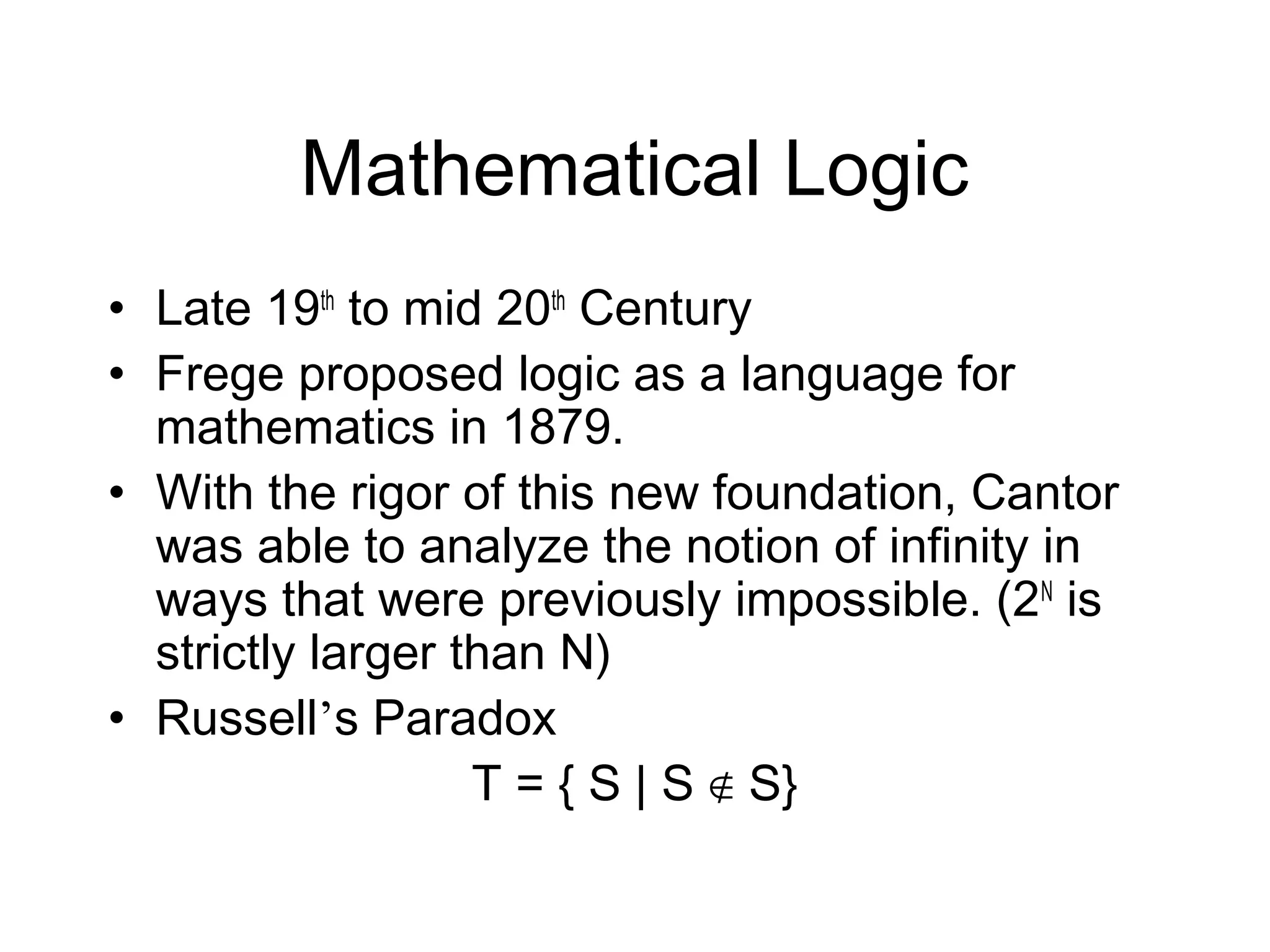
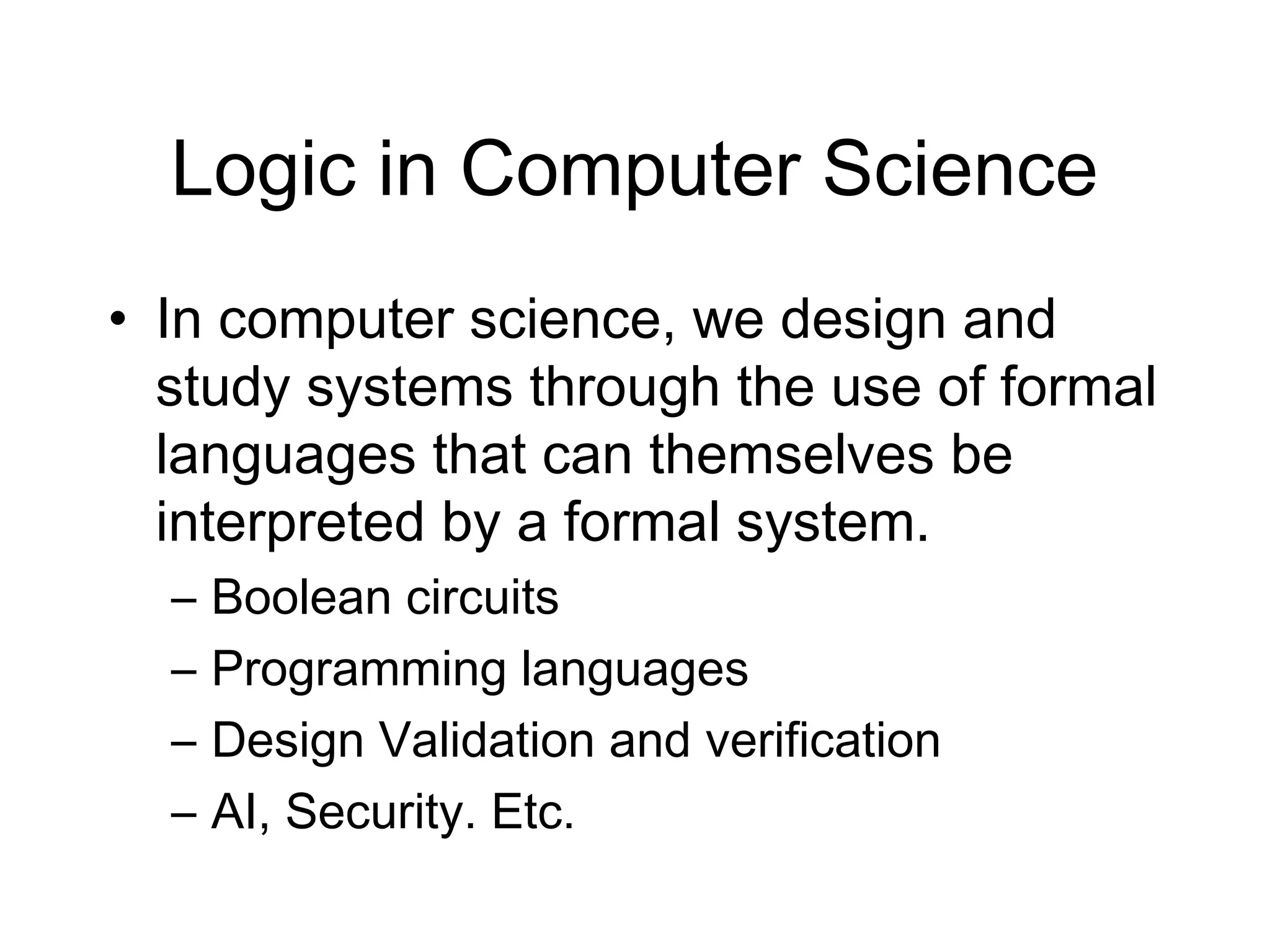
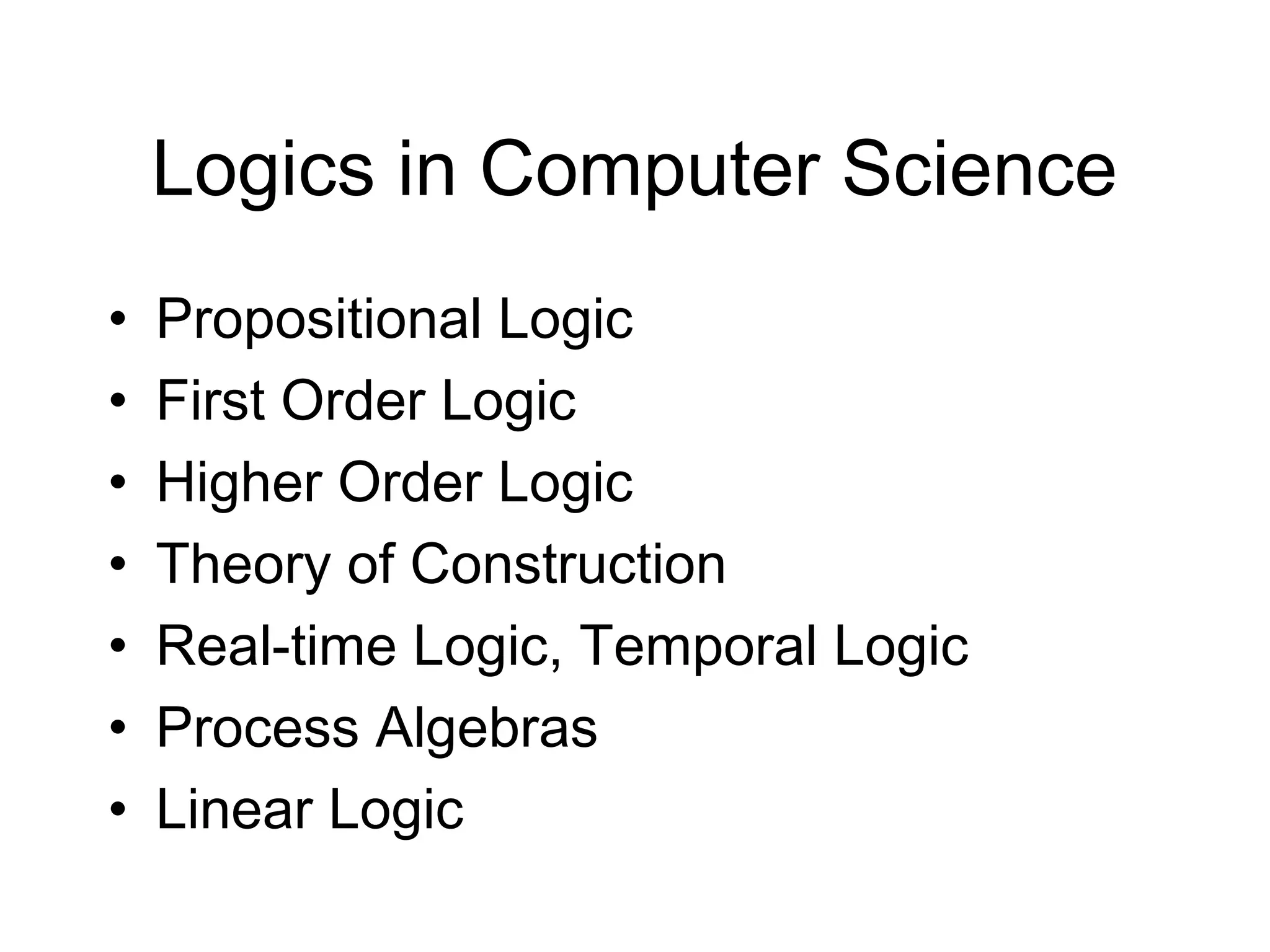

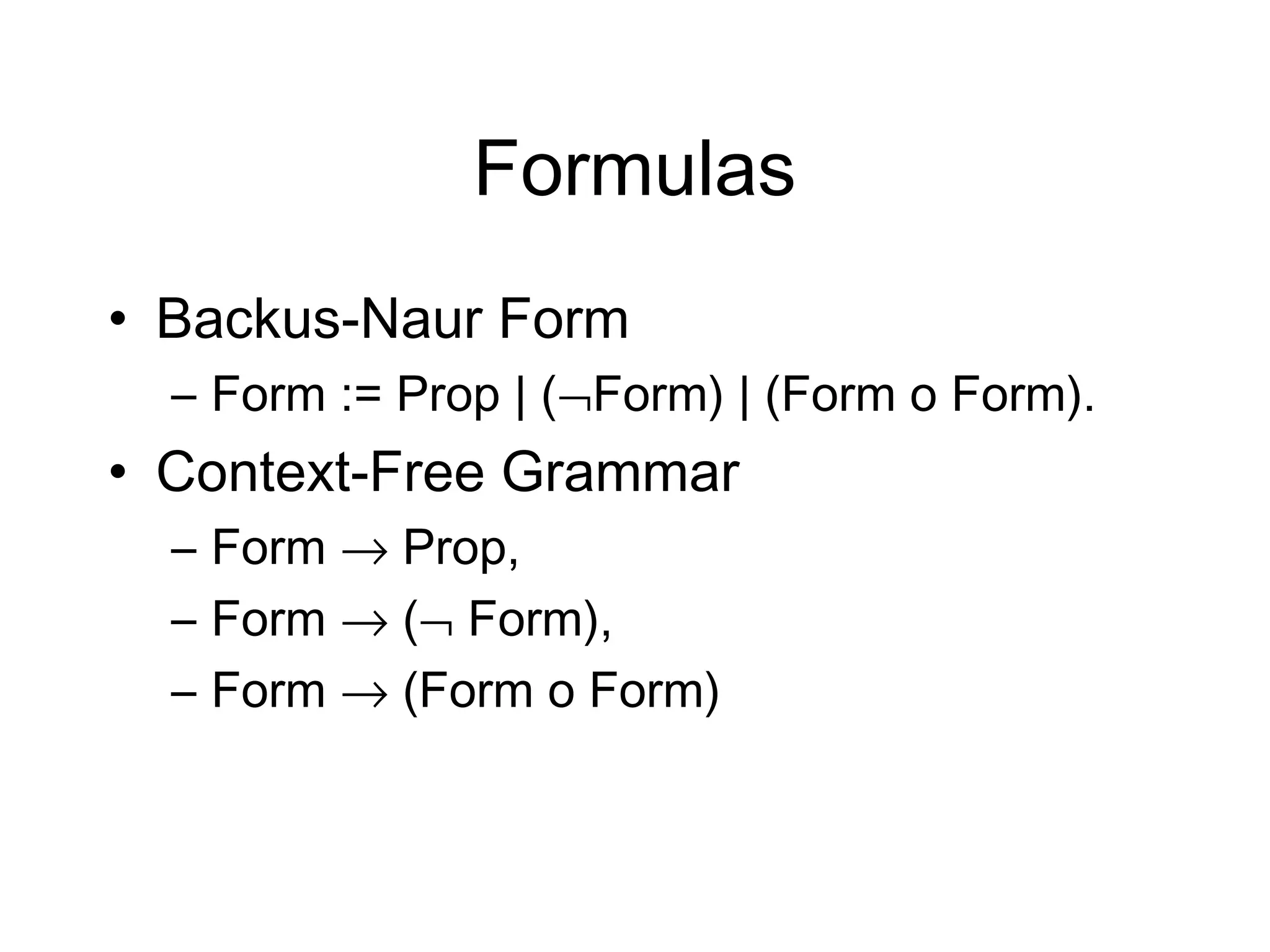

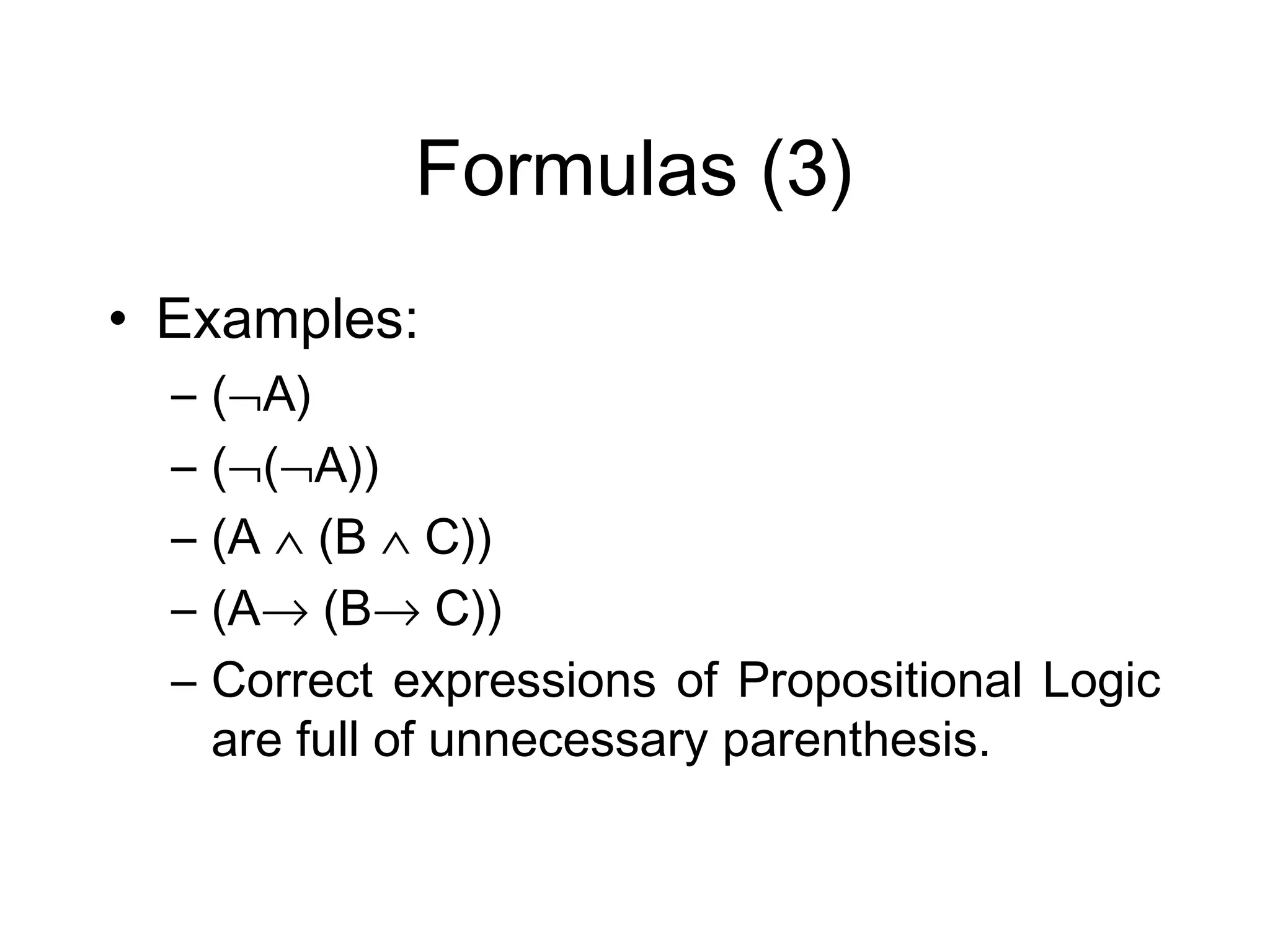

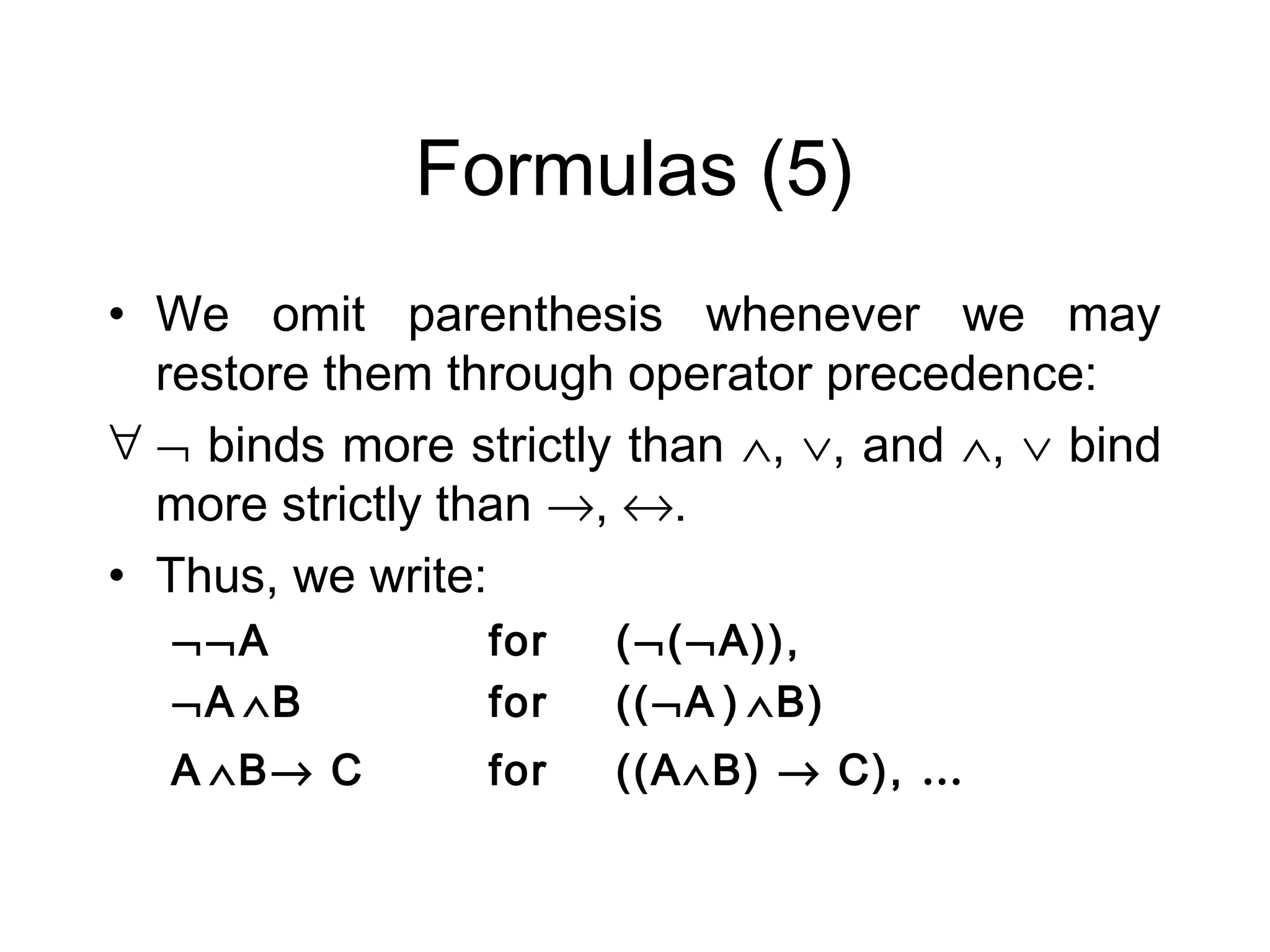
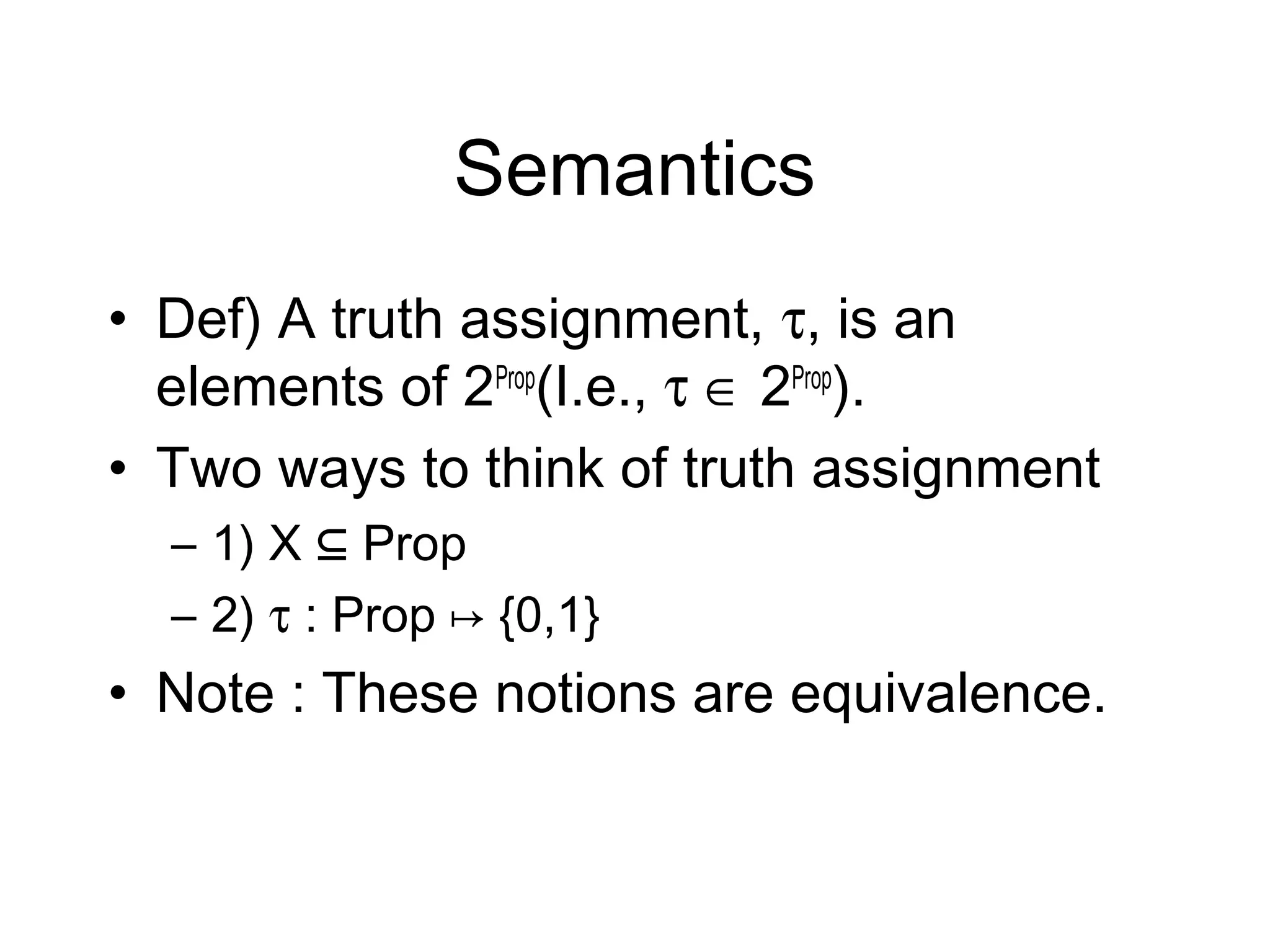
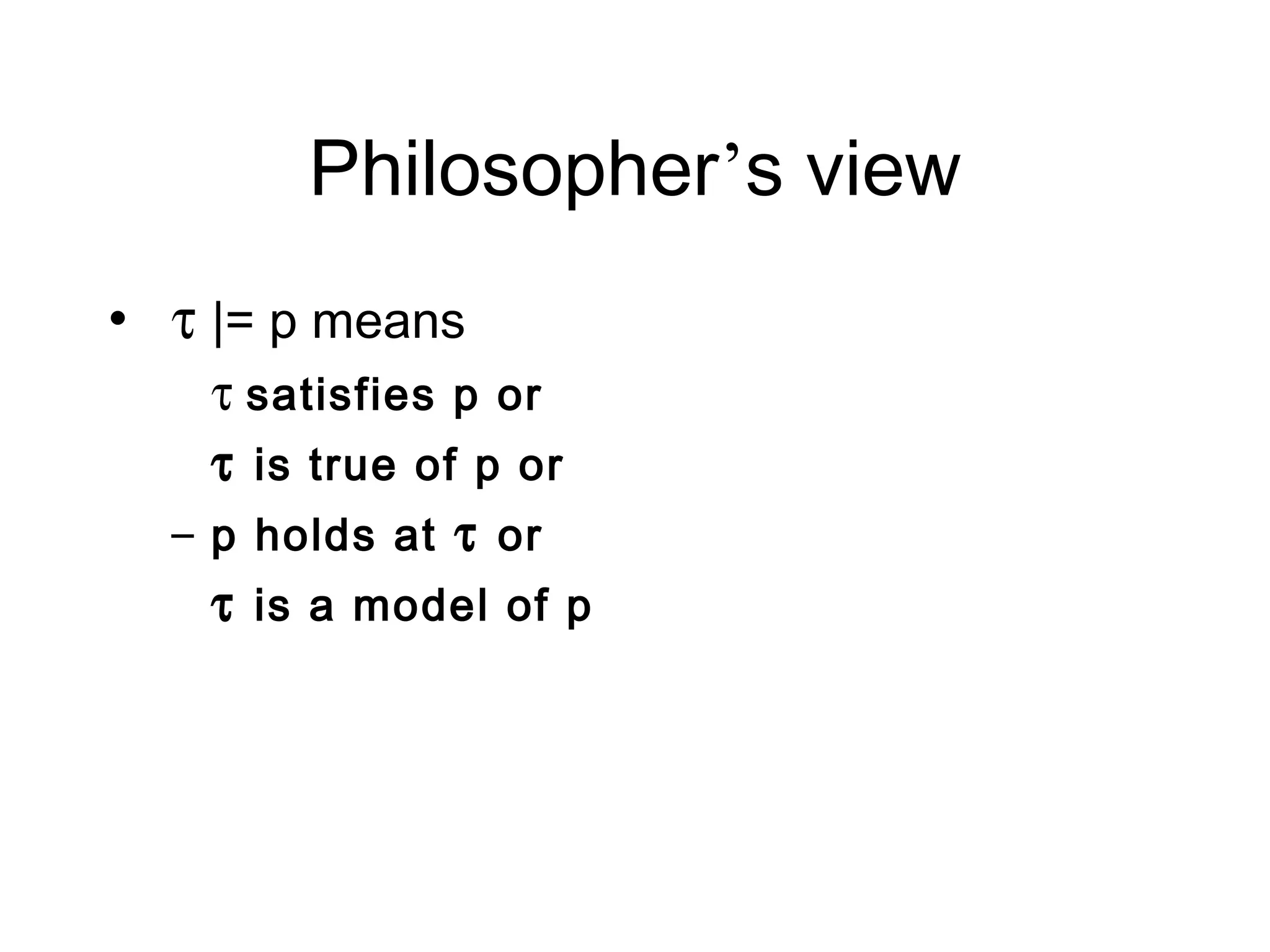
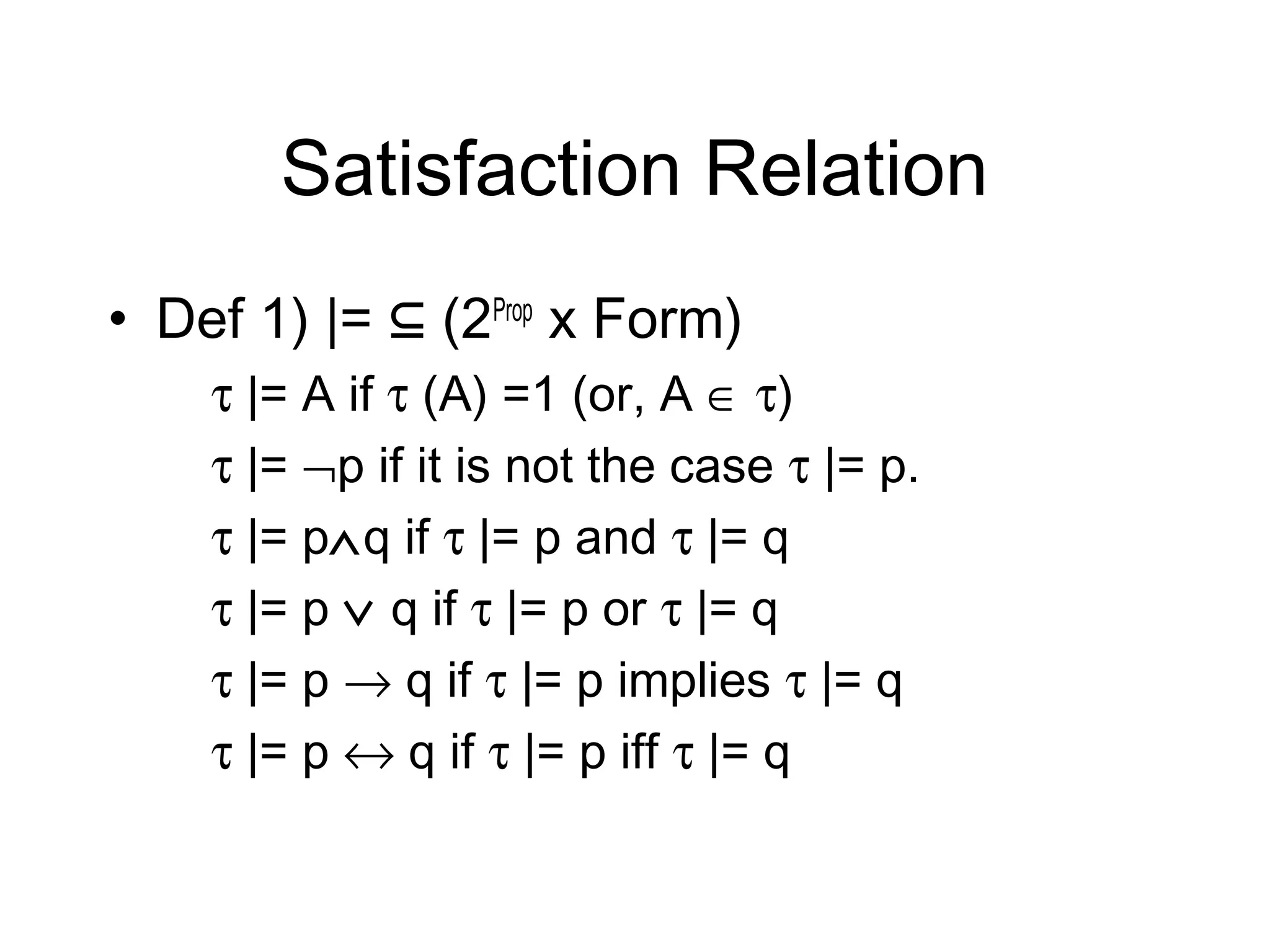
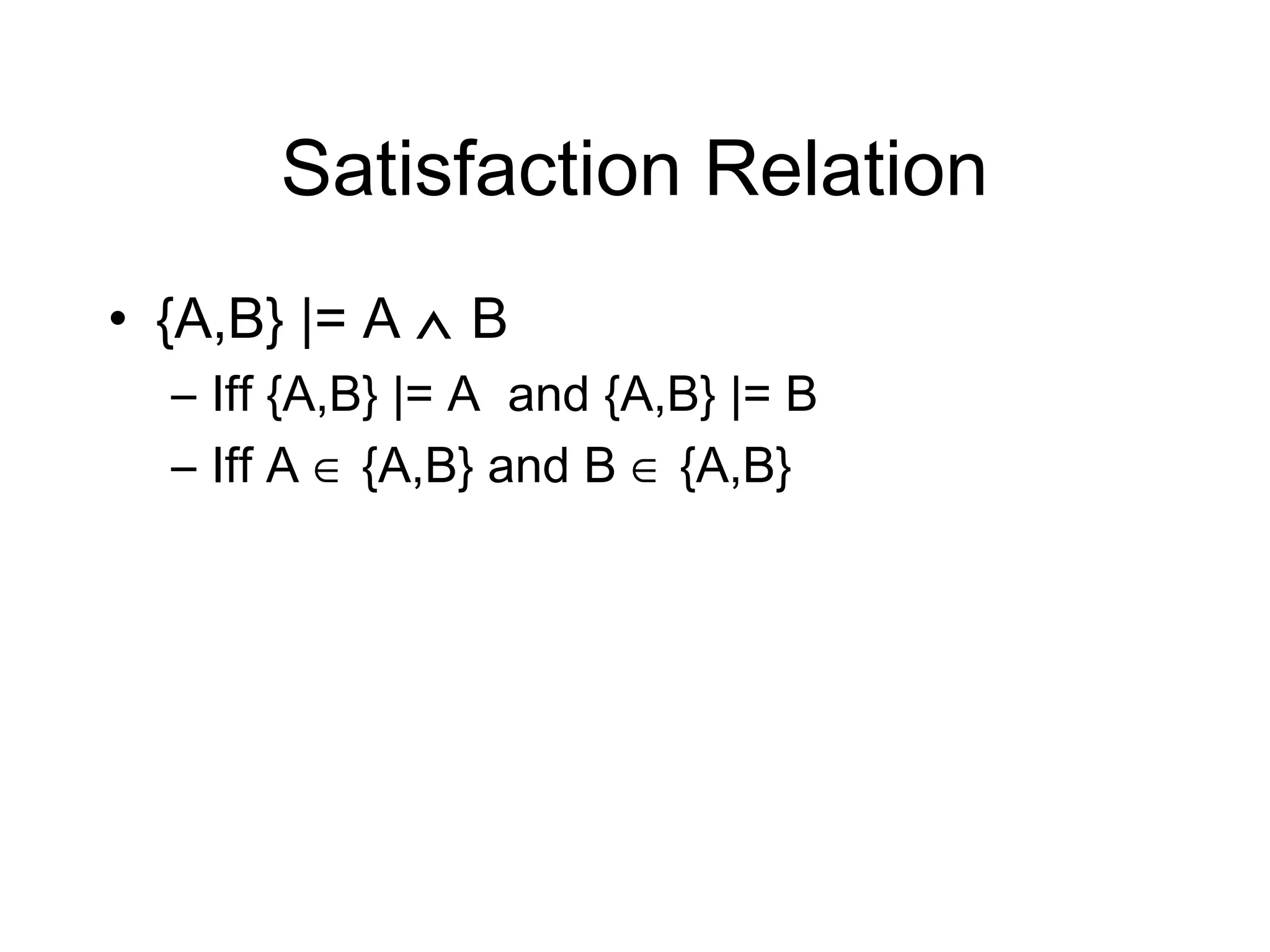
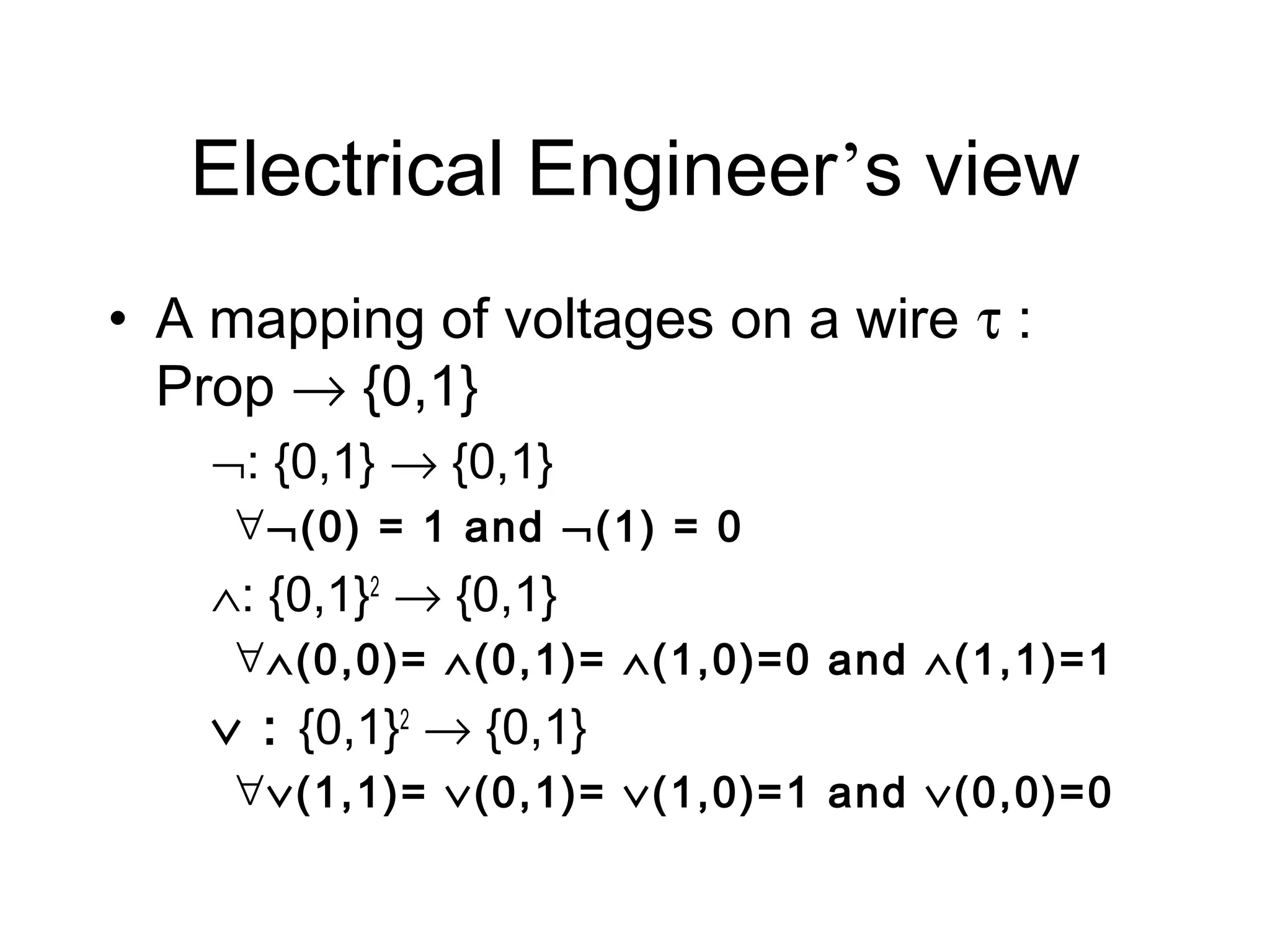


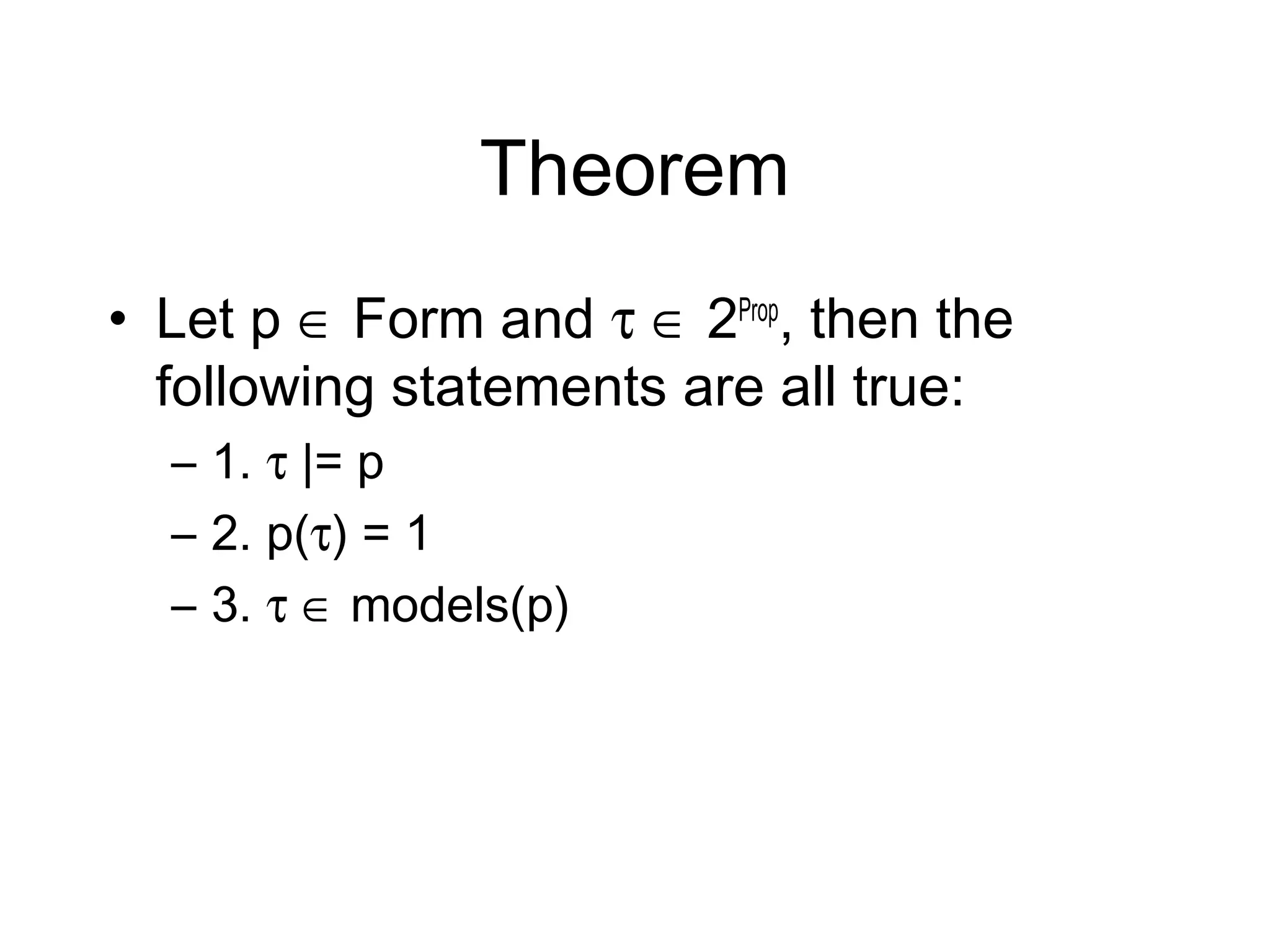

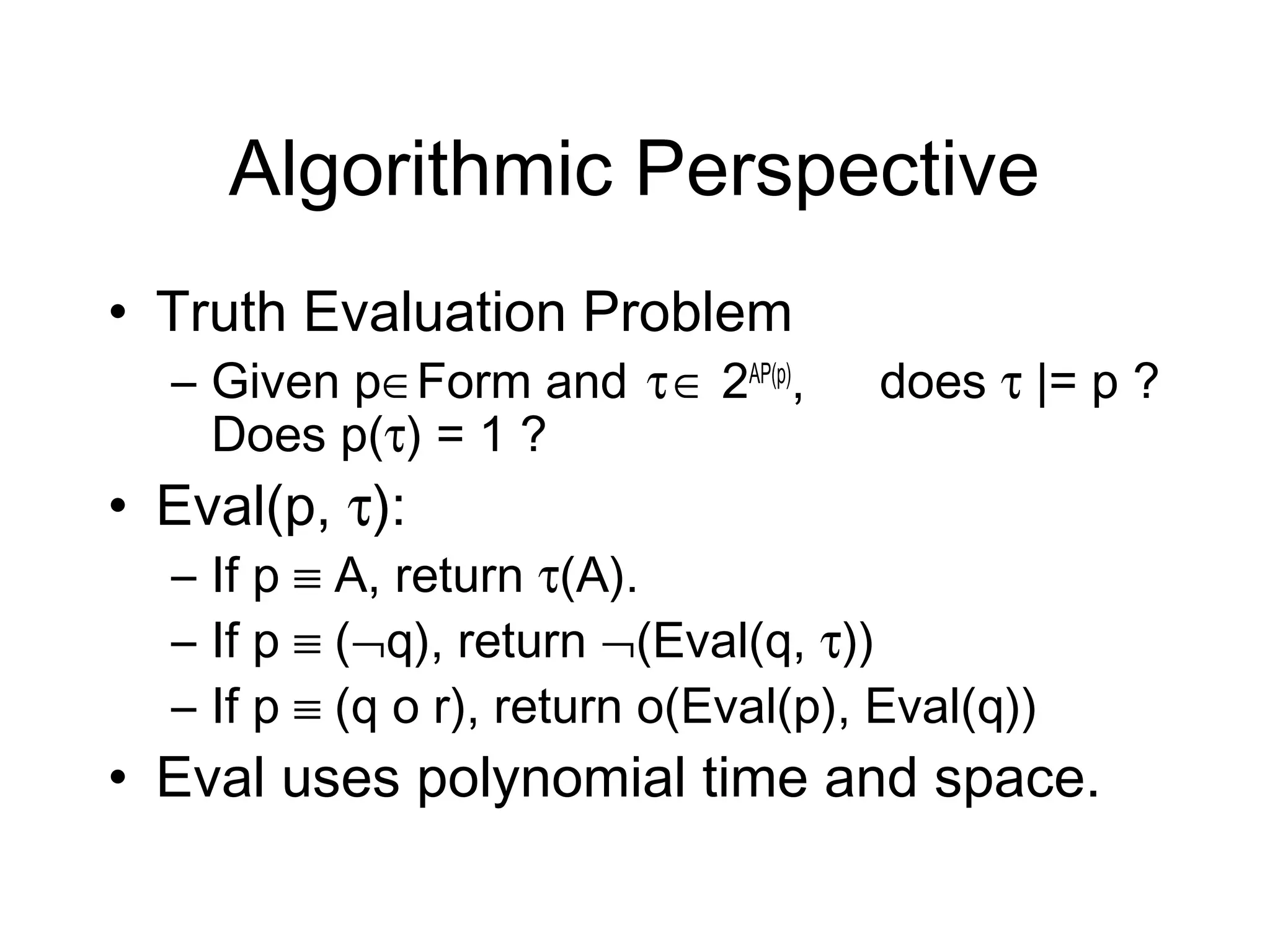
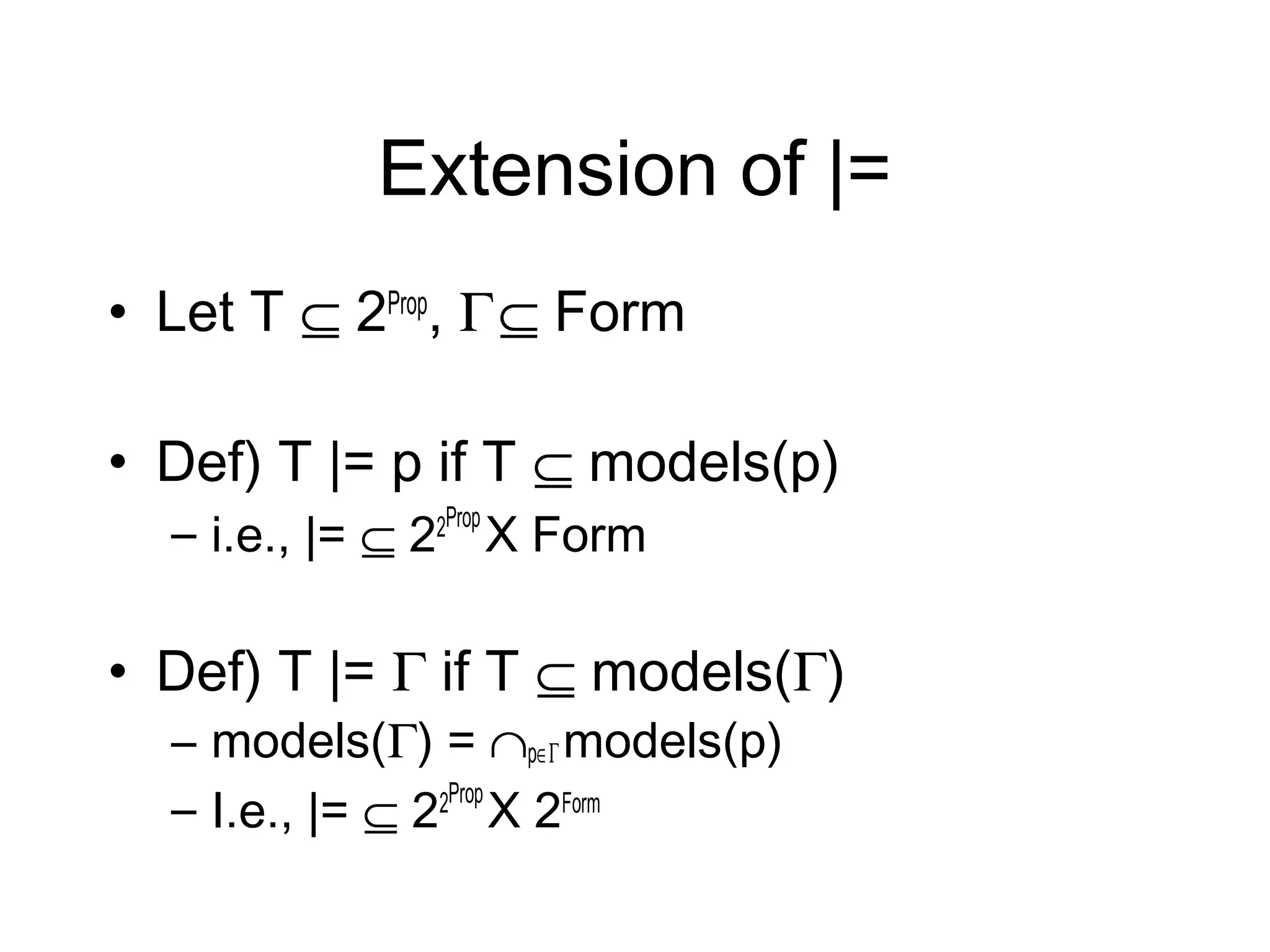
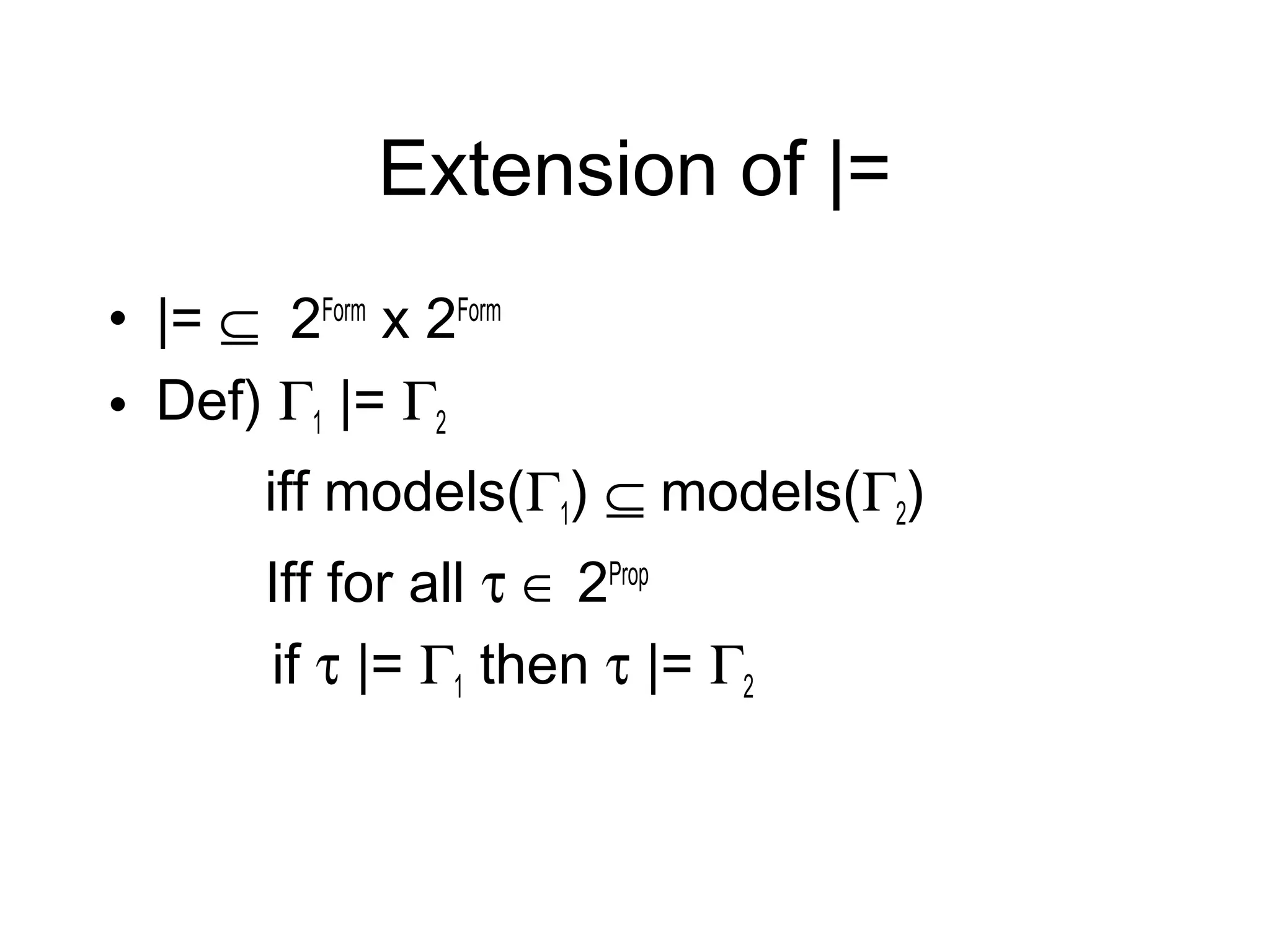

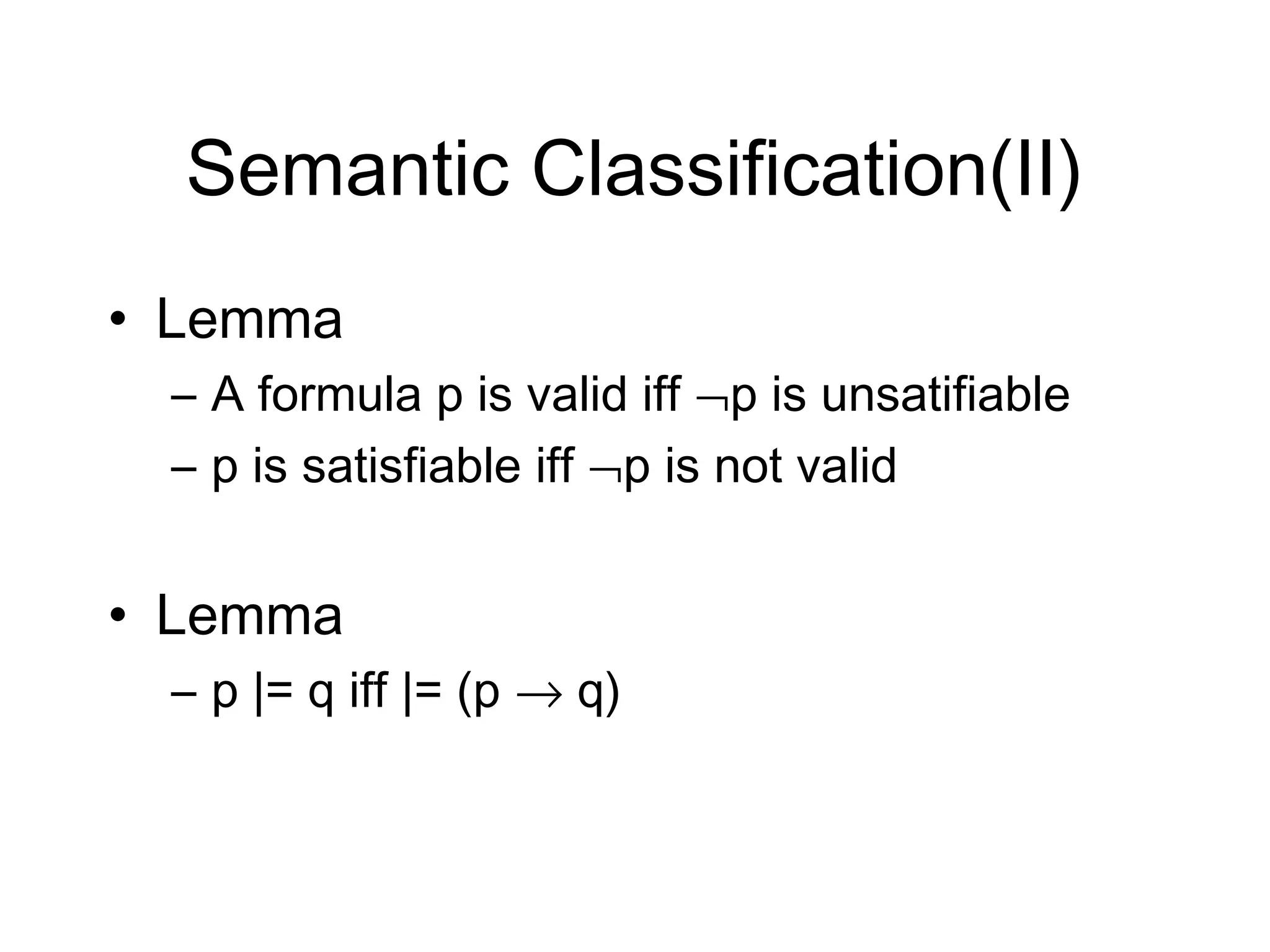
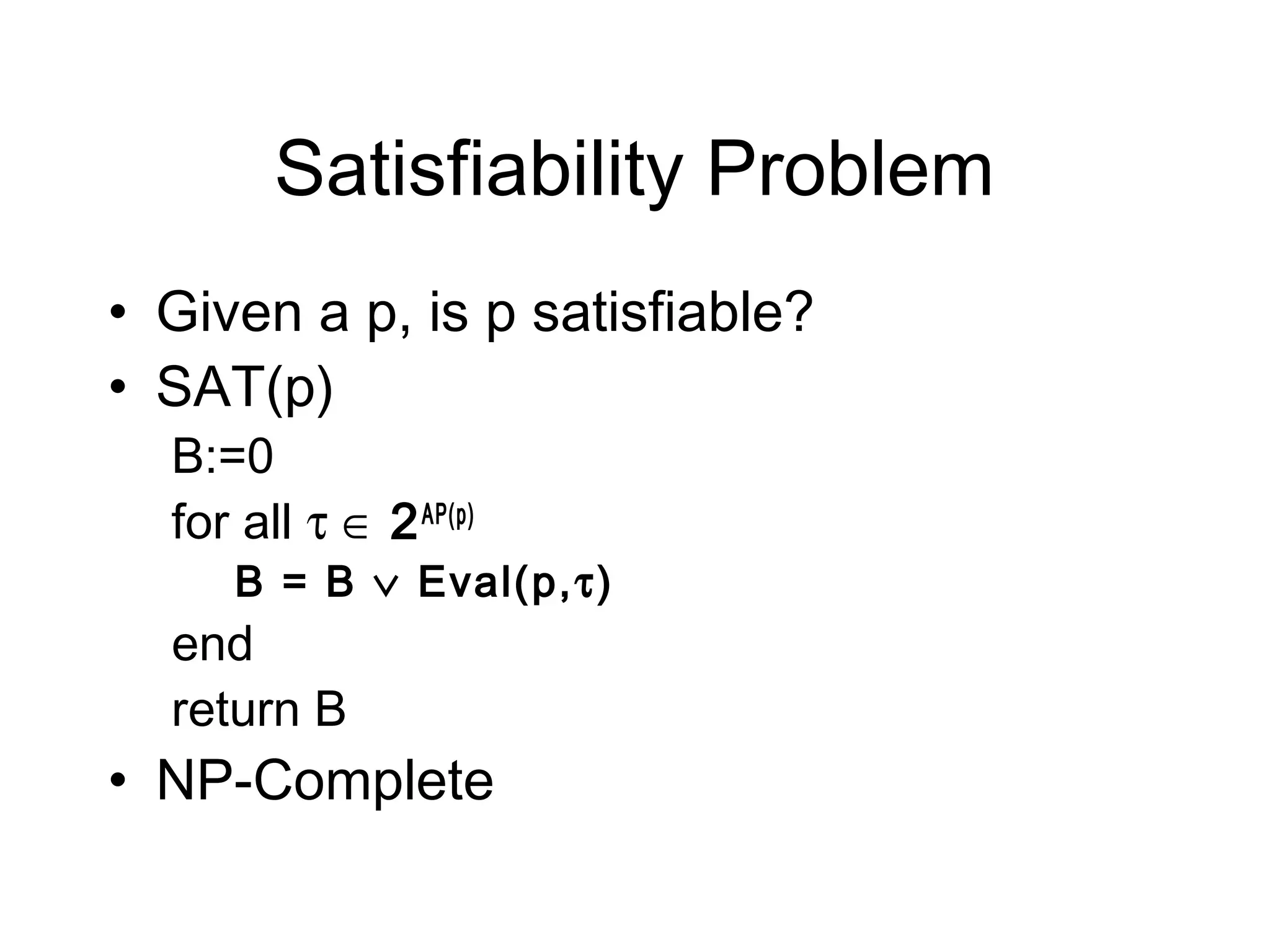
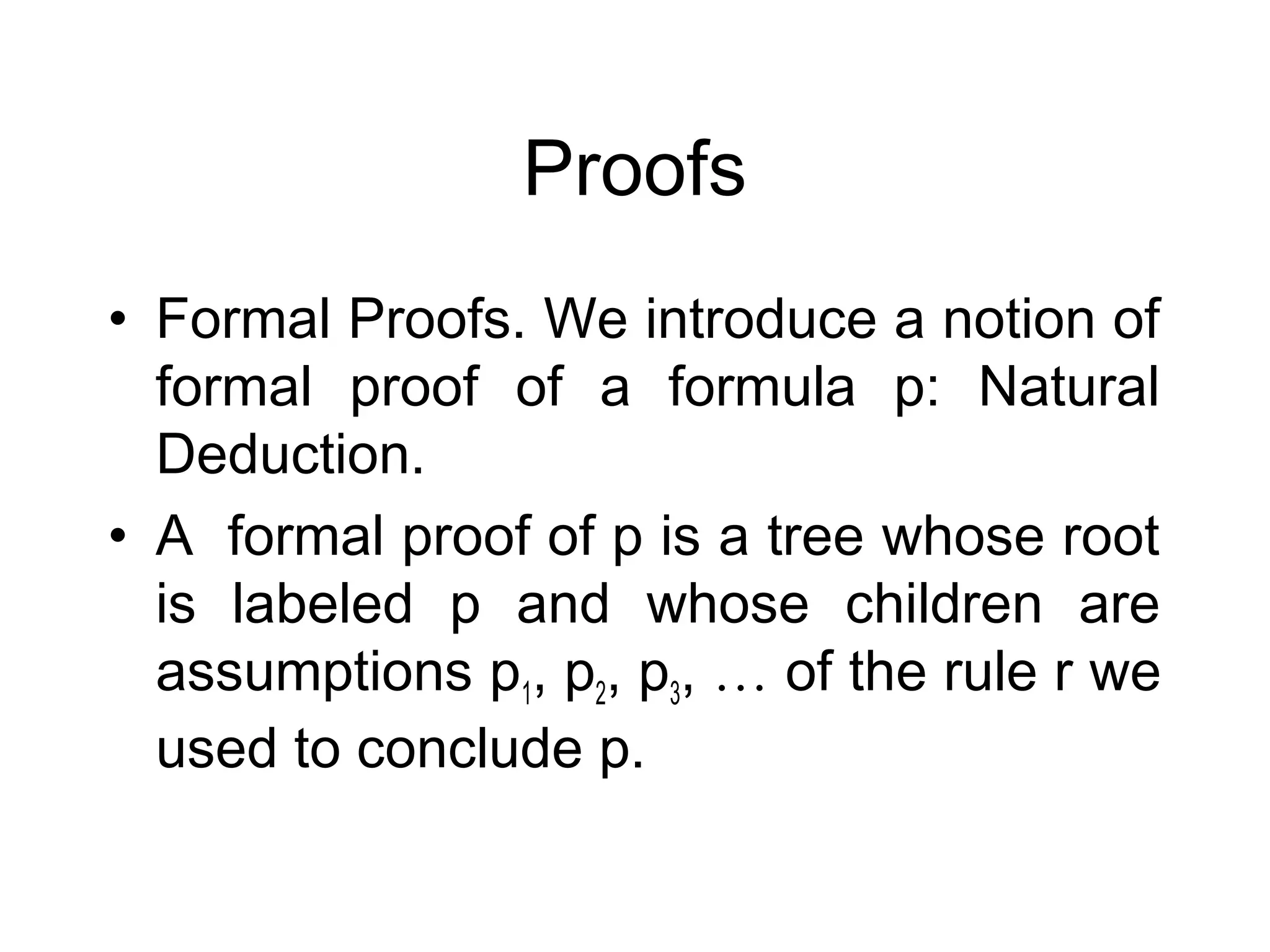
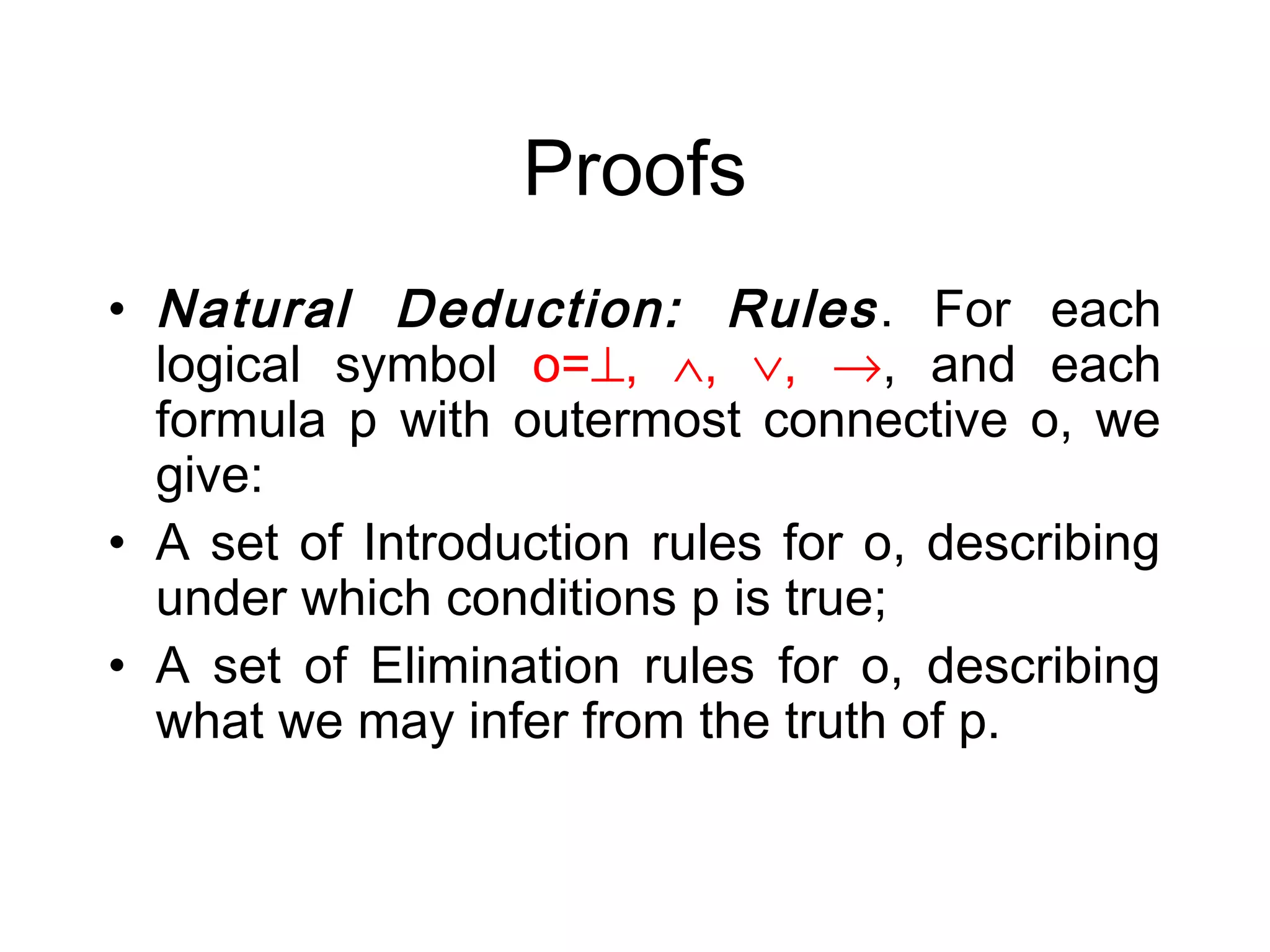


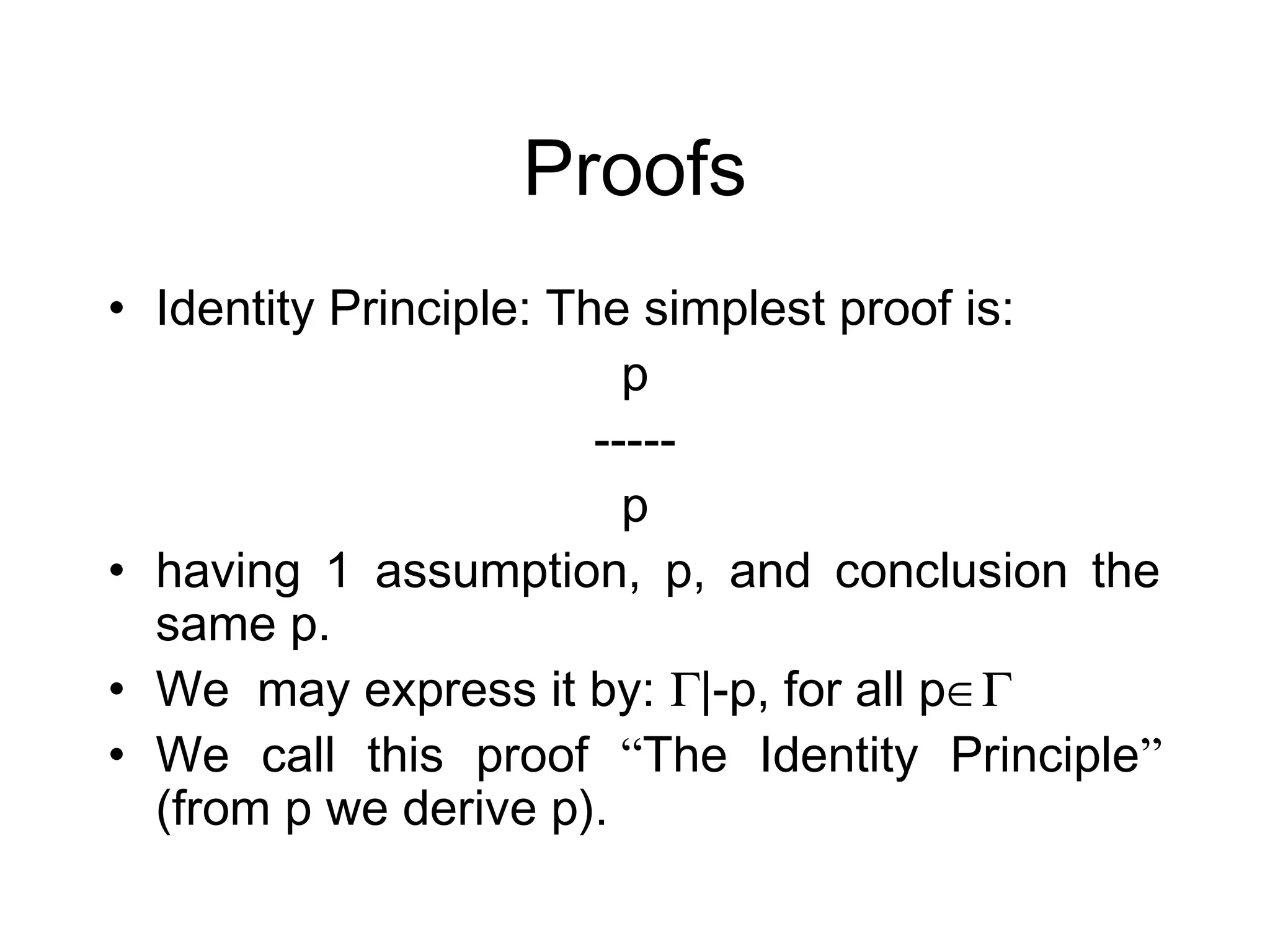
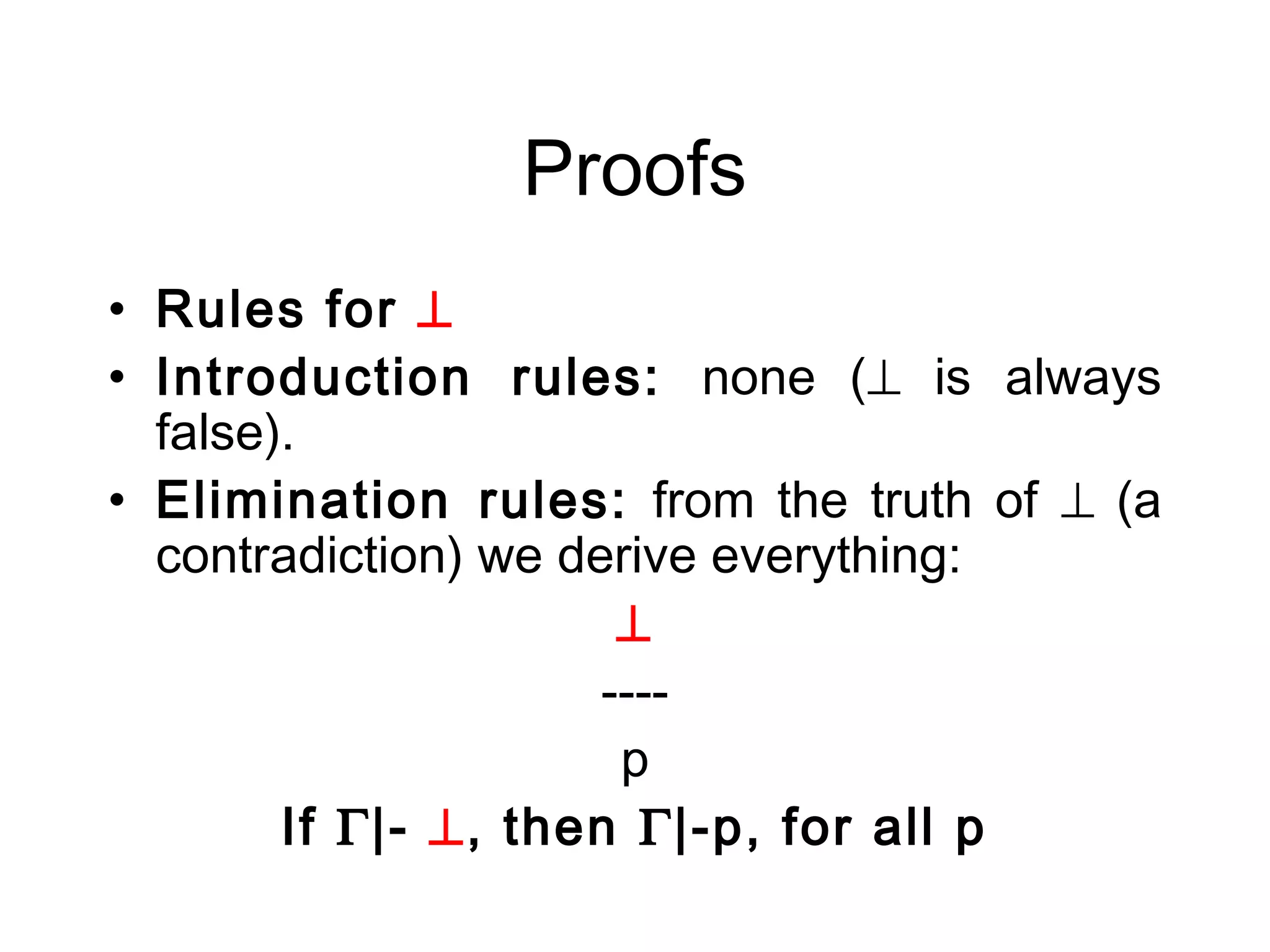
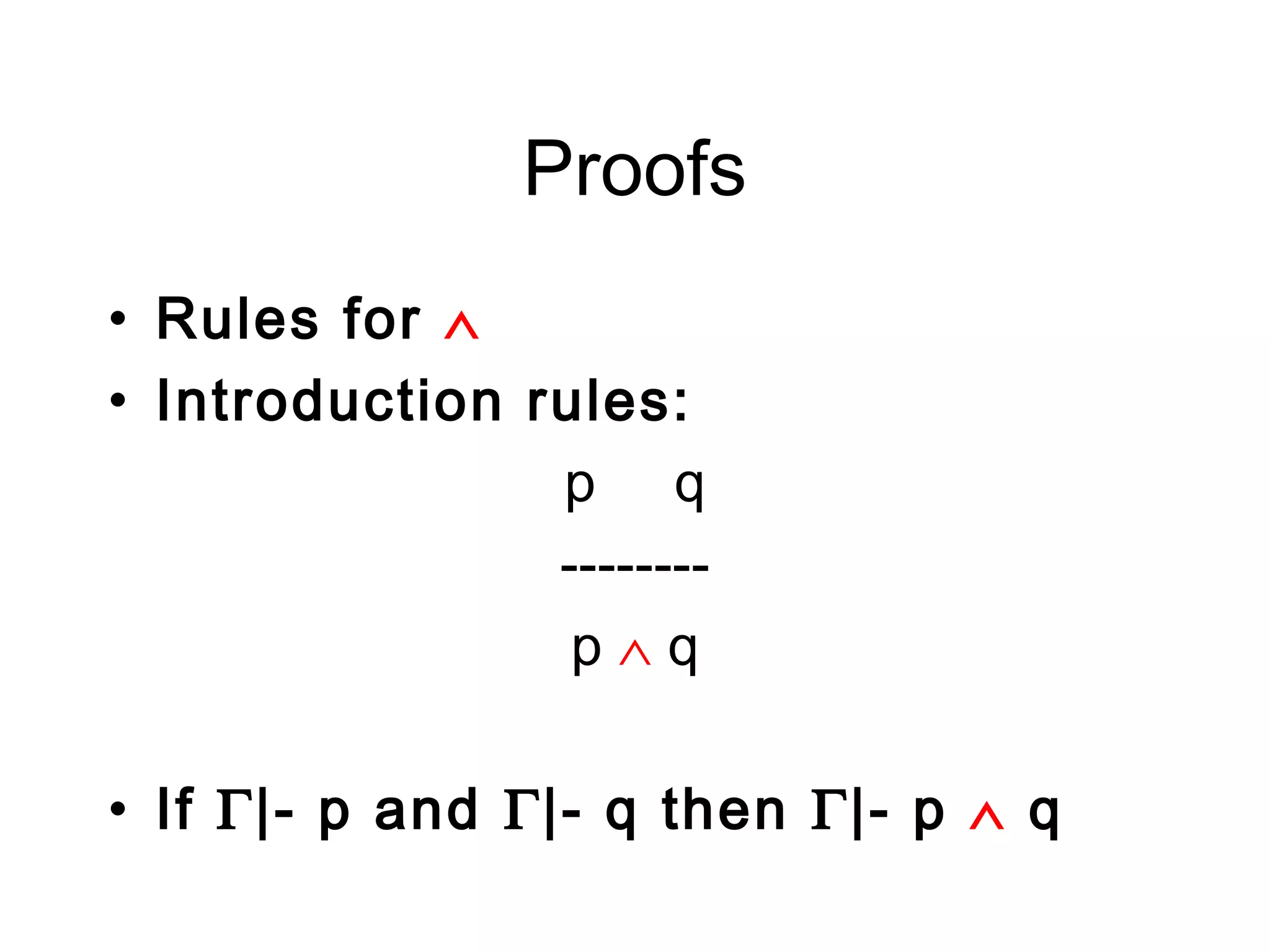
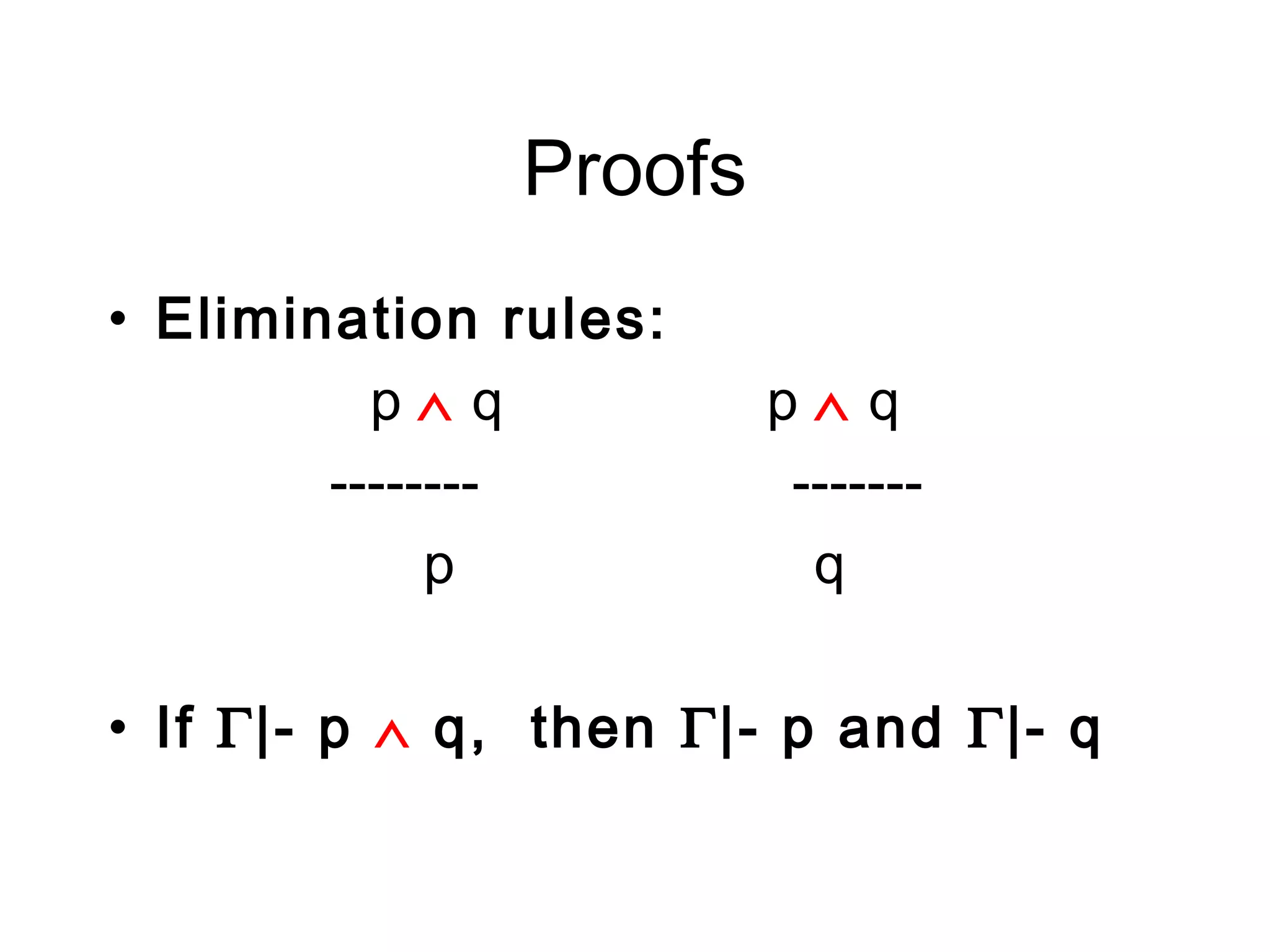
![Proofs
• Rules for → Introduction rule:
[p]
…
q
--------
p→q
• If Γ,p |- q, then Γ|-p→q
• We may drop any number of assumptions equal to
p from the proof of q.](https://image.slidesharecdn.com/logic-121126003919-phpapp01/75/Logic-40-2048.jpg)
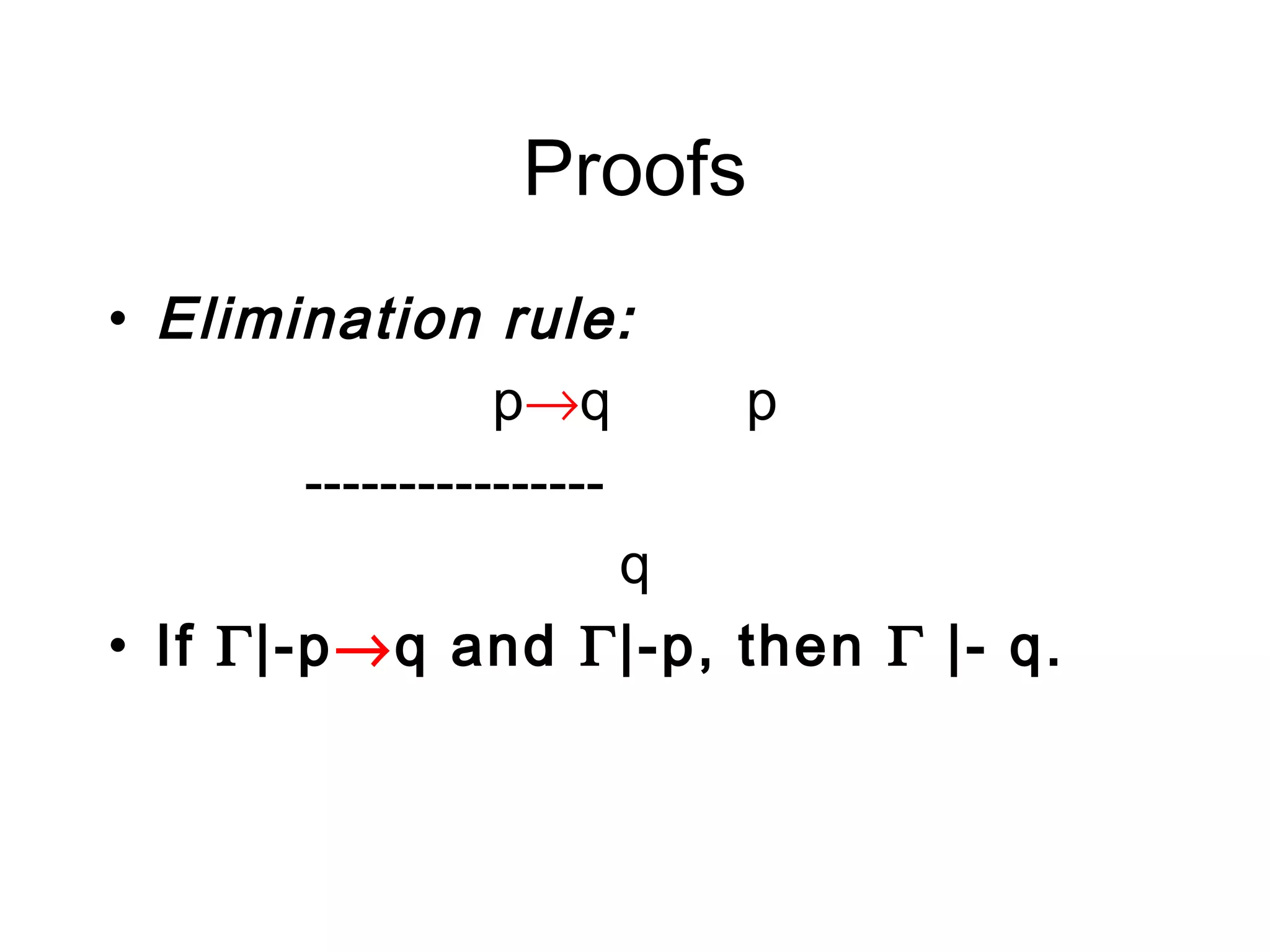
![Proofs
• The only axiom not associated to a
connective, nor justified by some
Introduction rule, is Double Negation:
[¬p]
….
⊥
---
p
• If Γ, ¬p|- ⊥, then Γ|-p
• We may drop any number of assumptions equal to
¬p from the proof of q.](https://image.slidesharecdn.com/logic-121126003919-phpapp01/75/Logic-42-2048.jpg)
